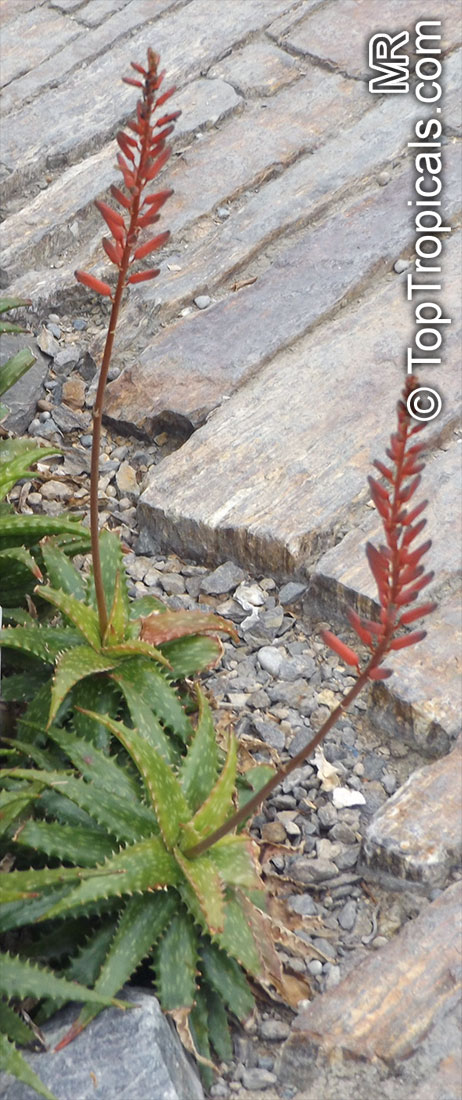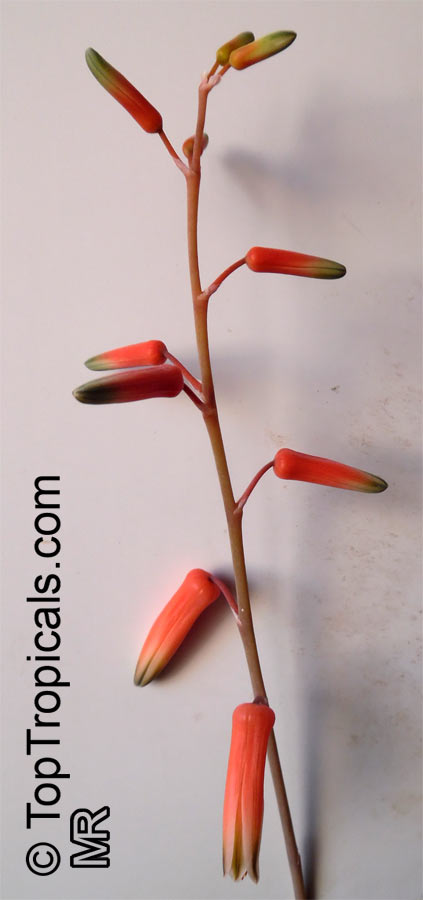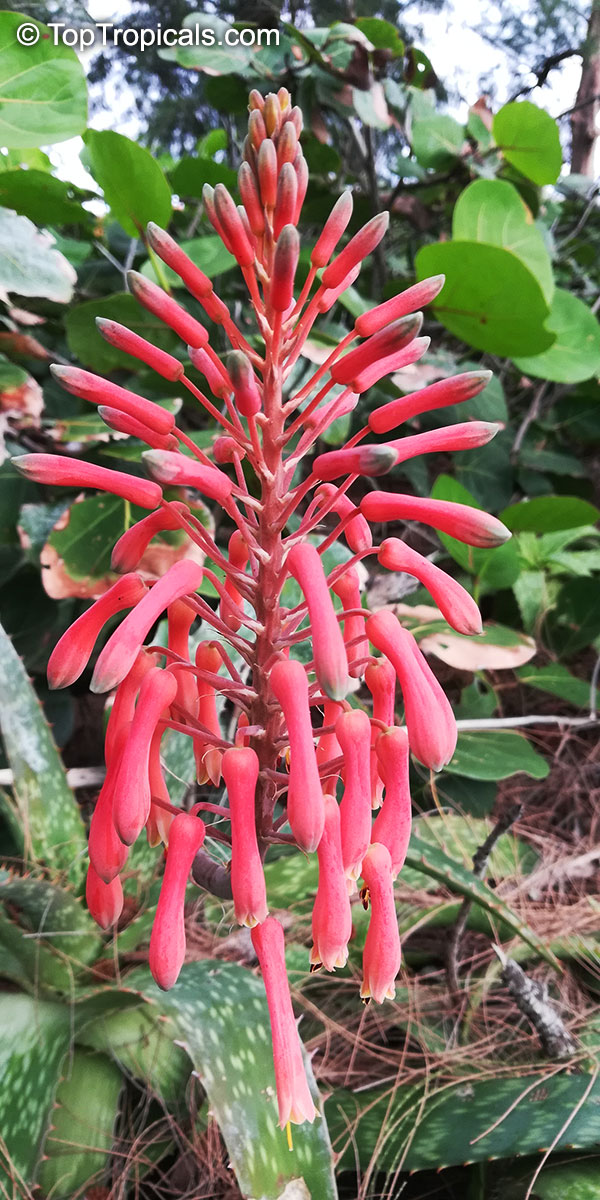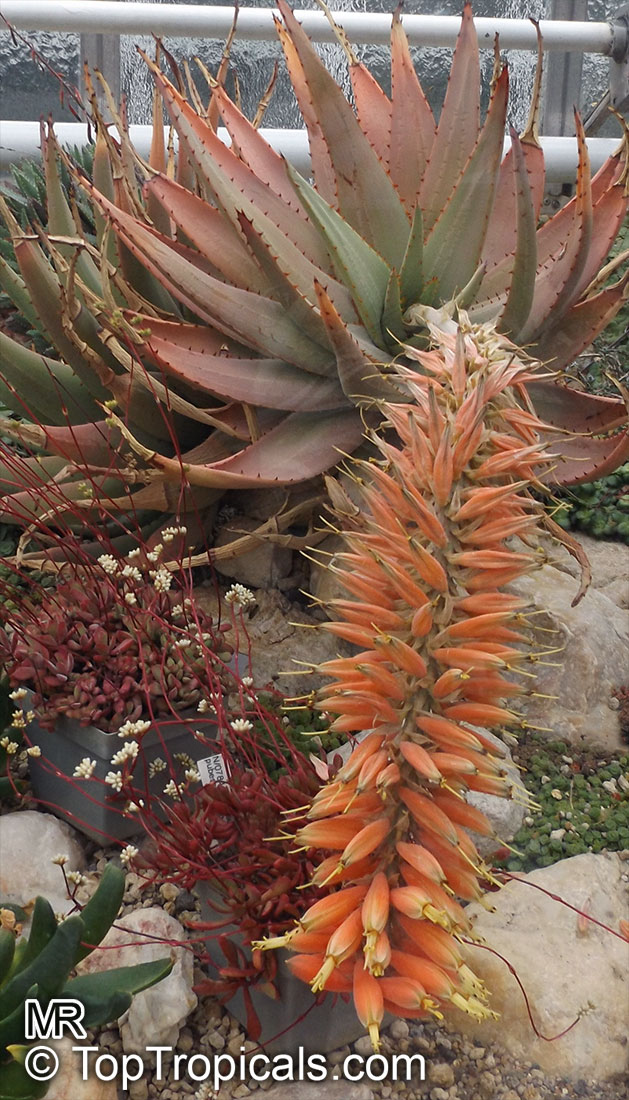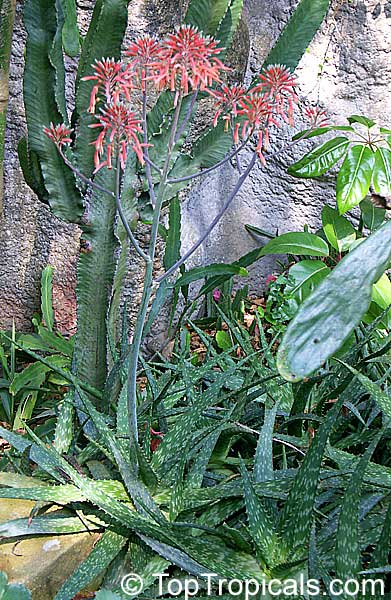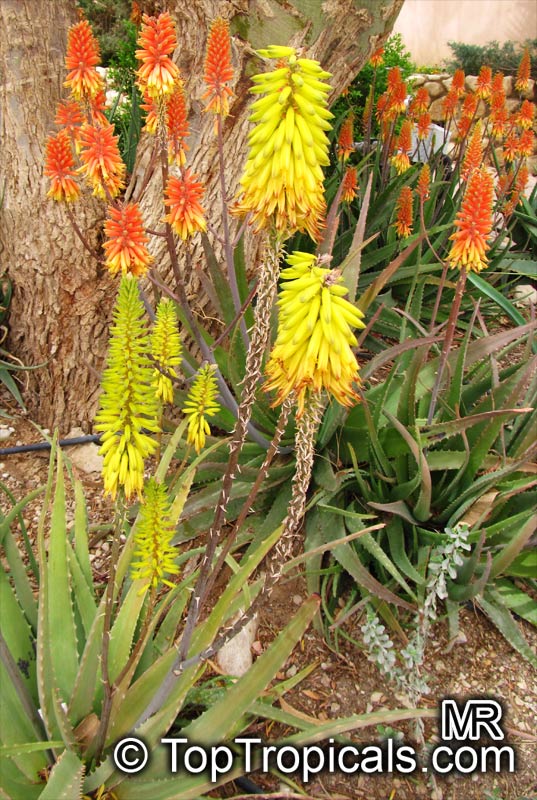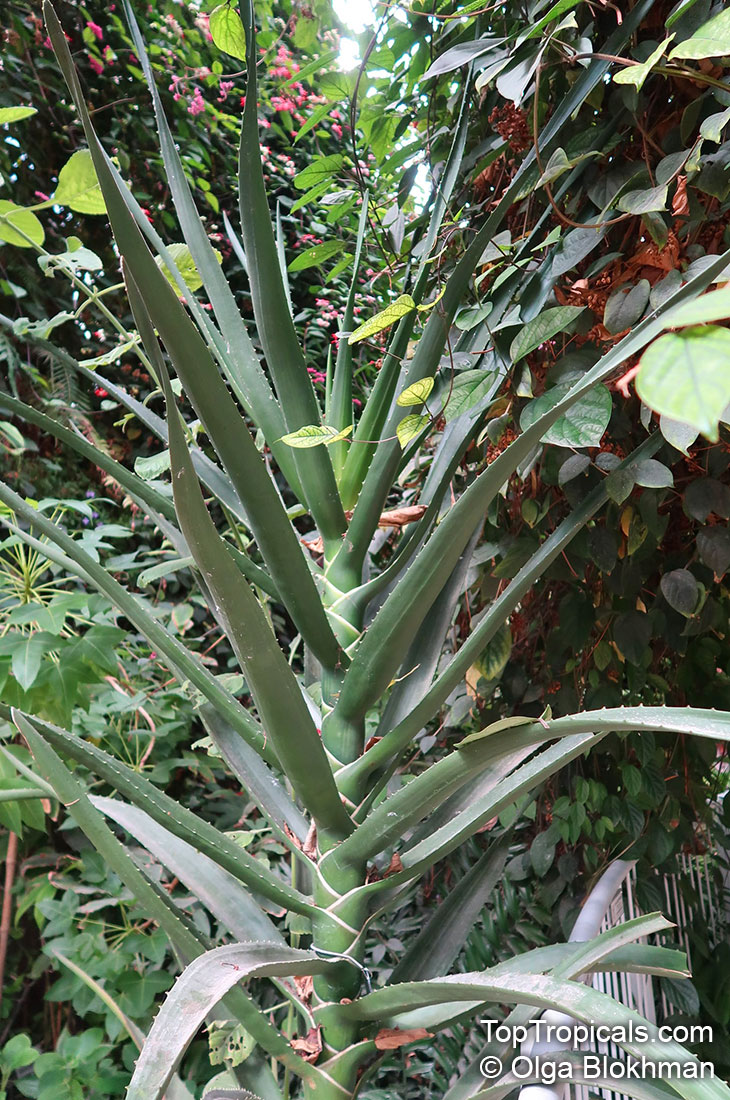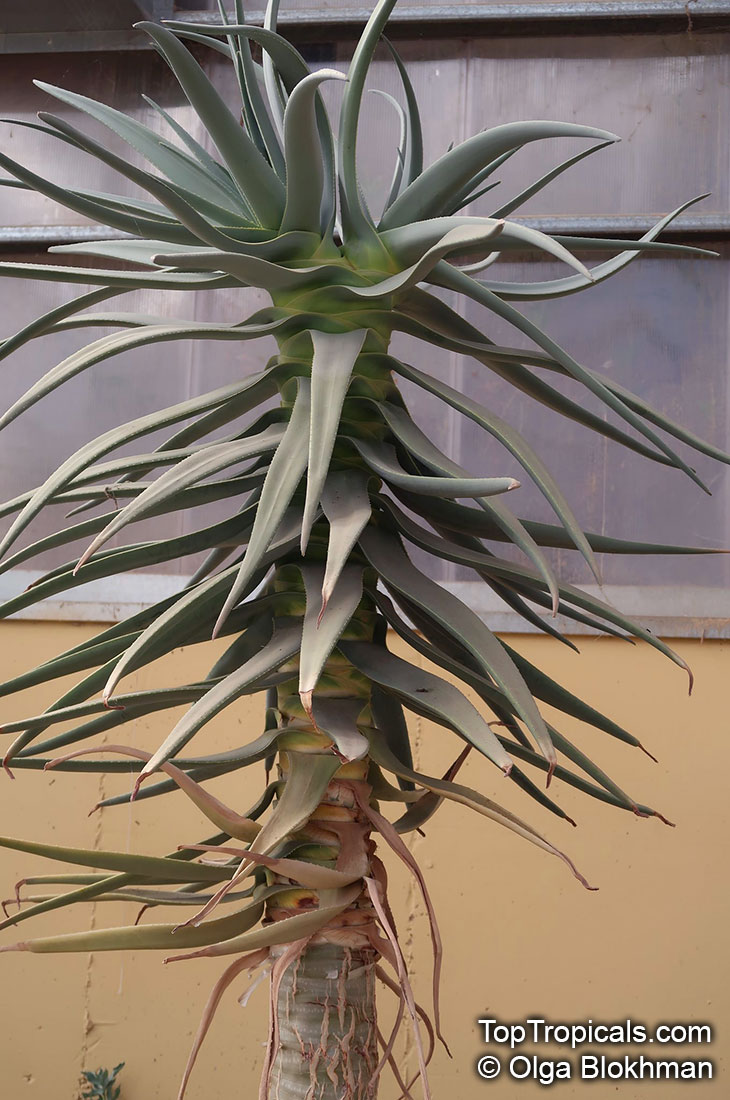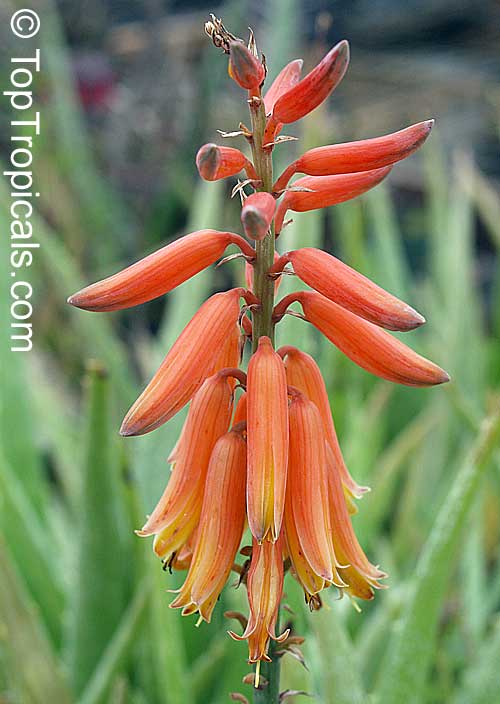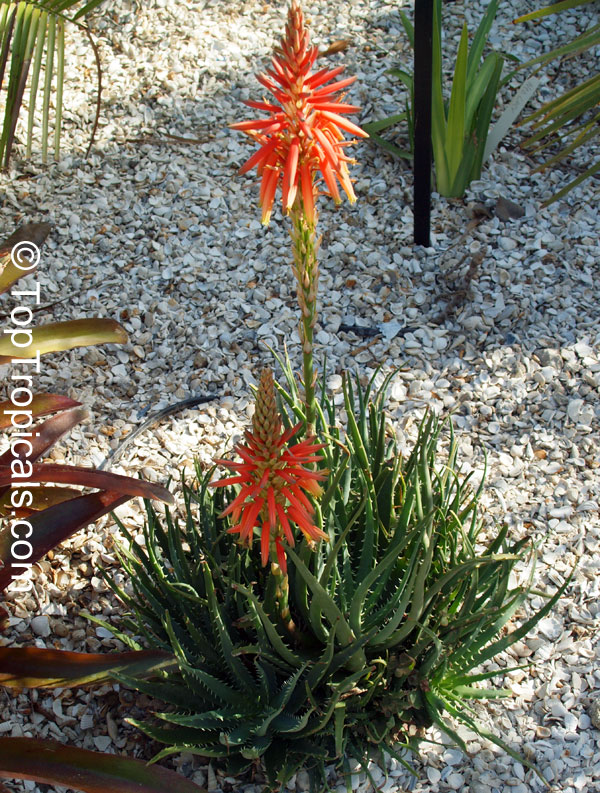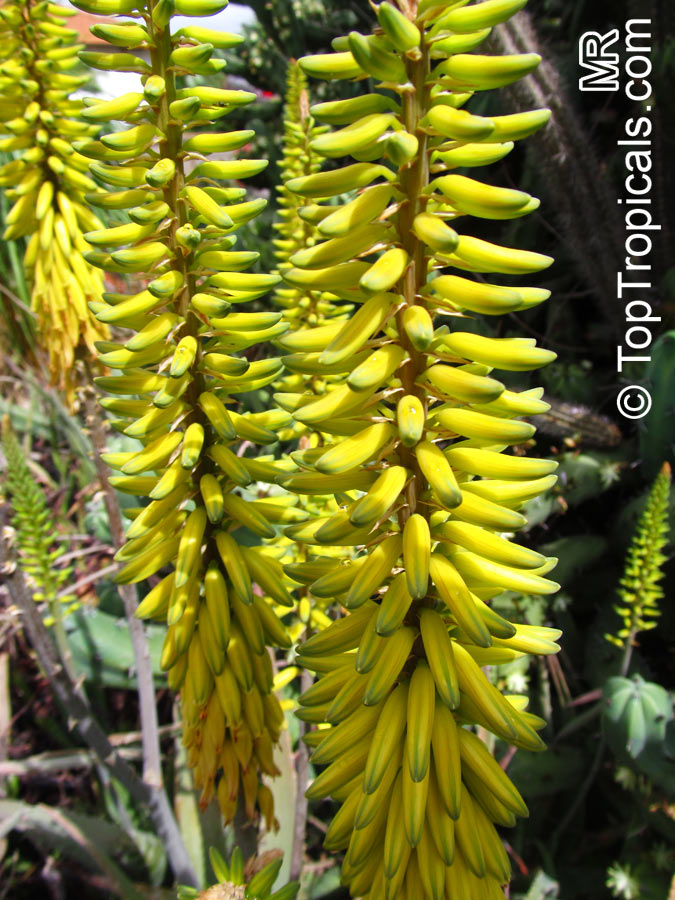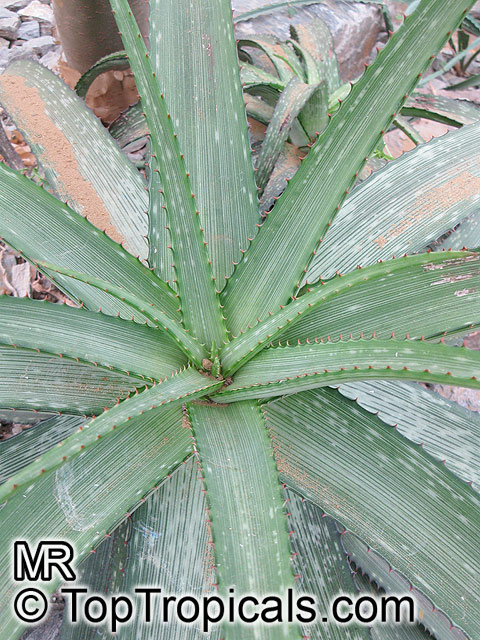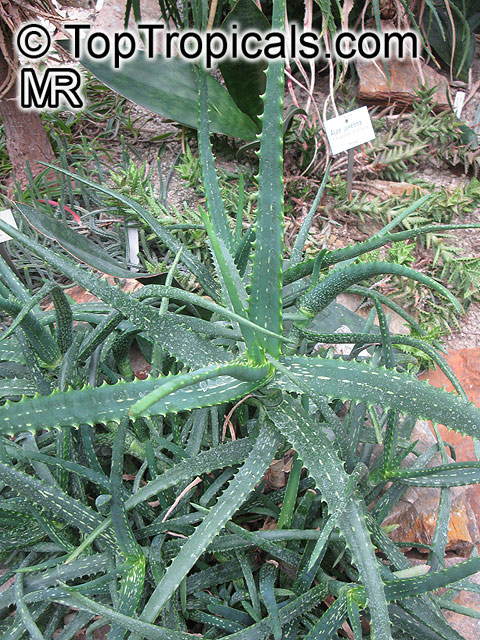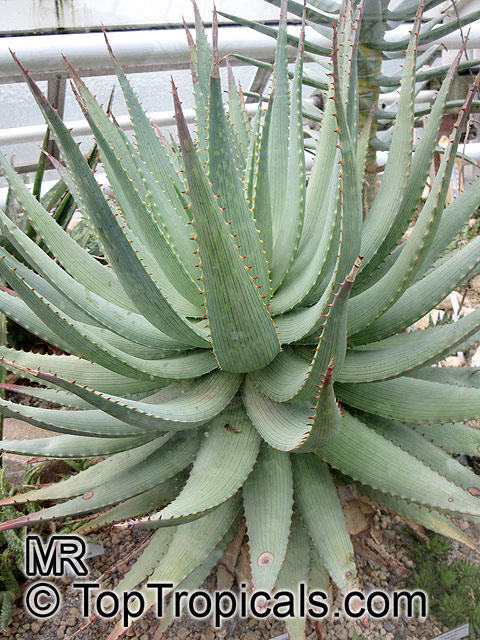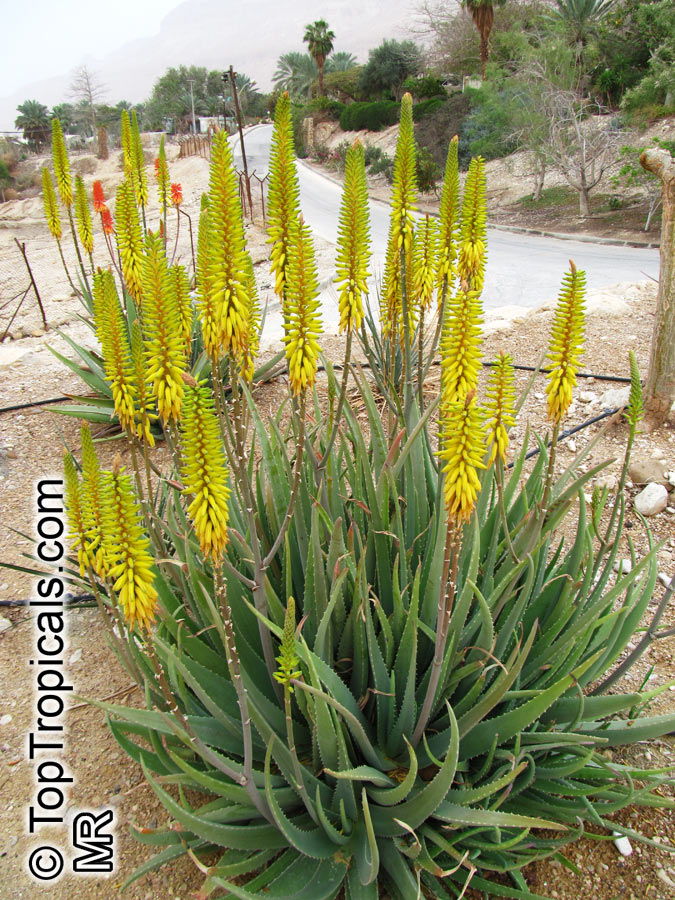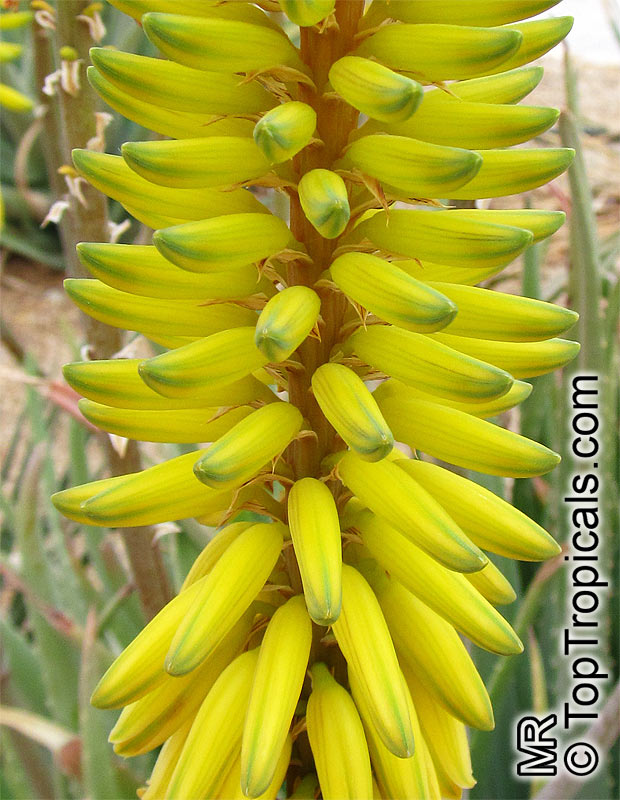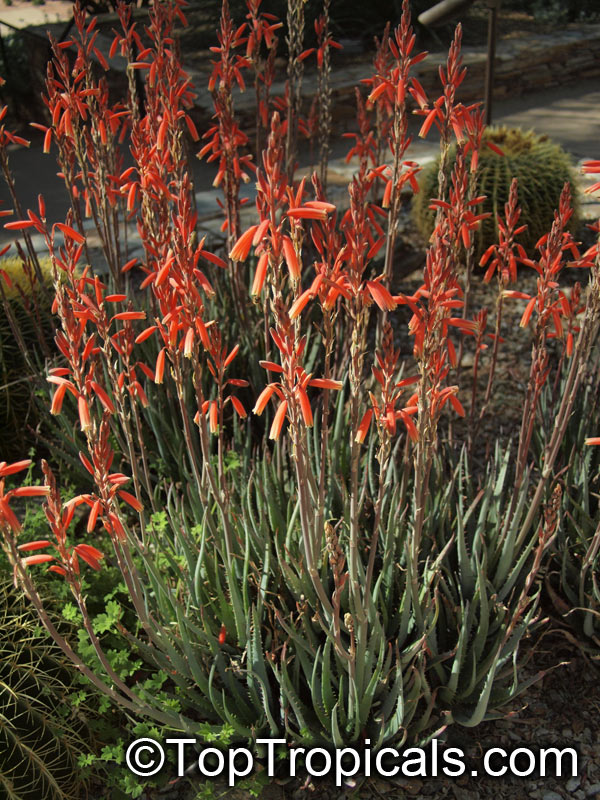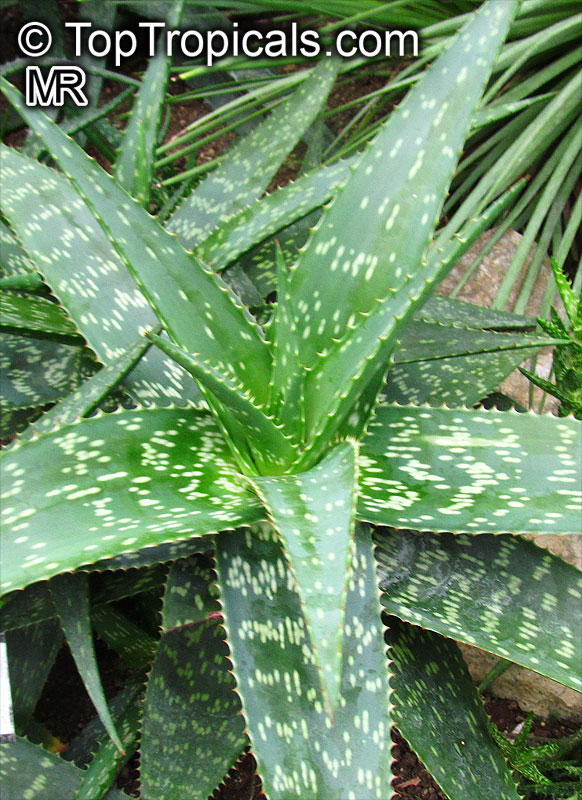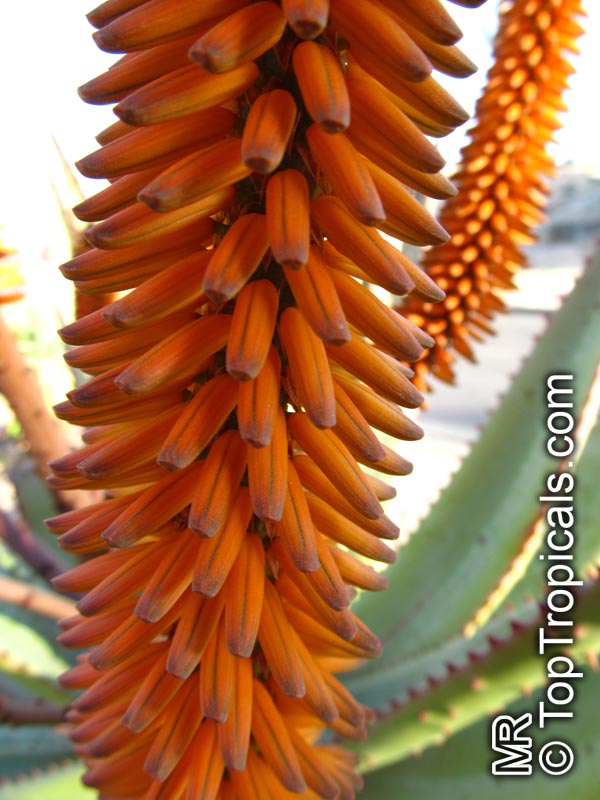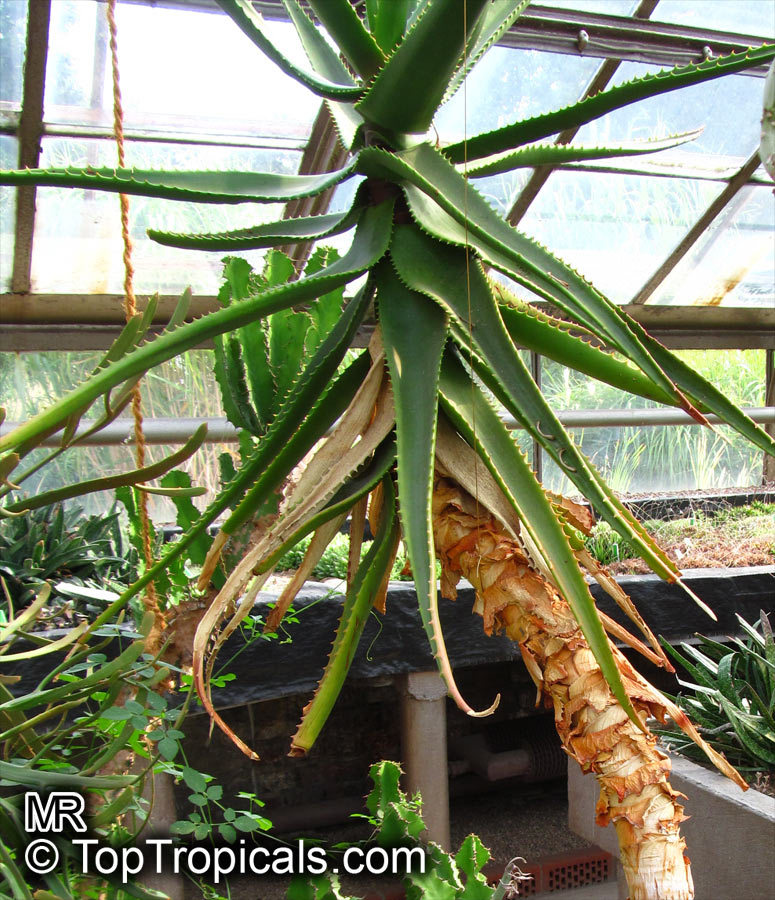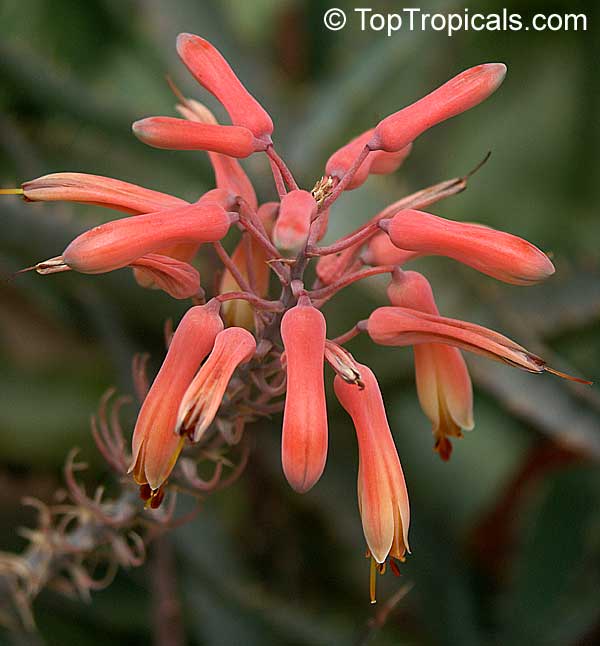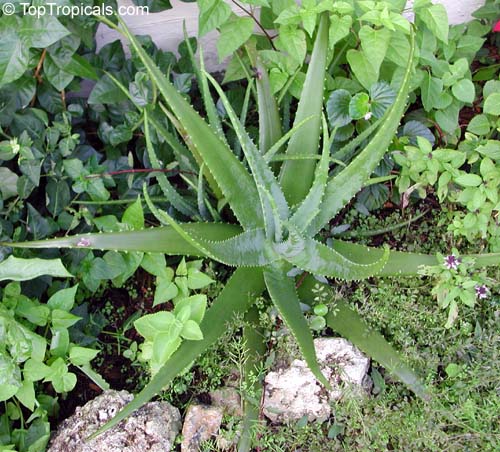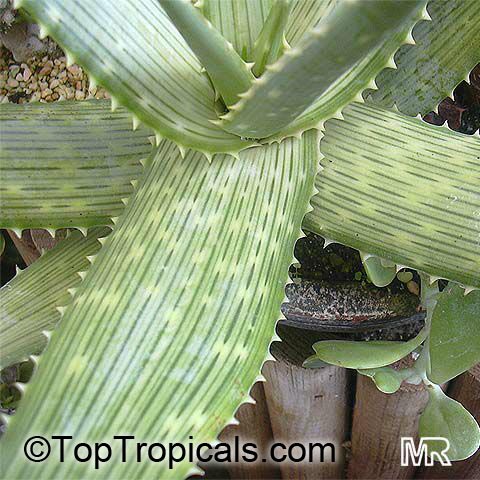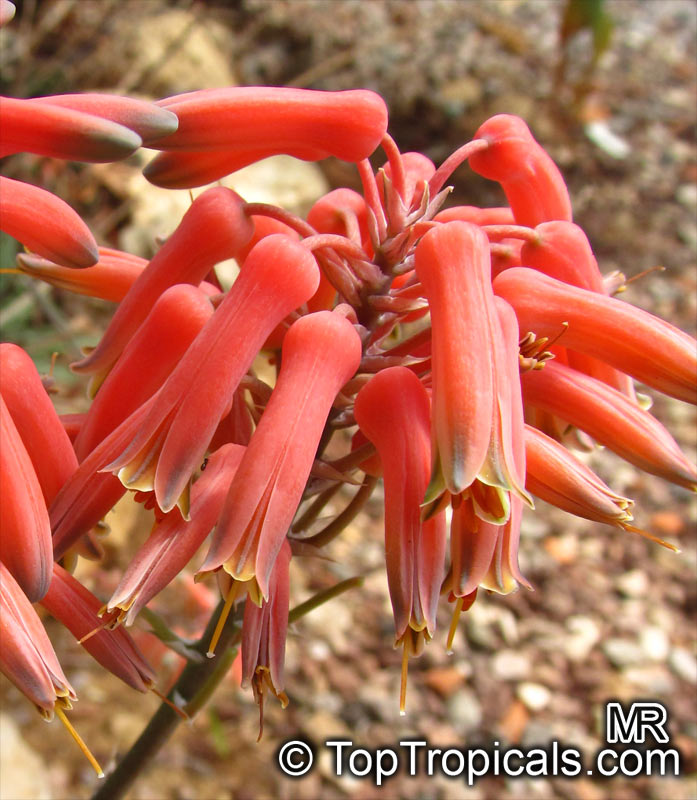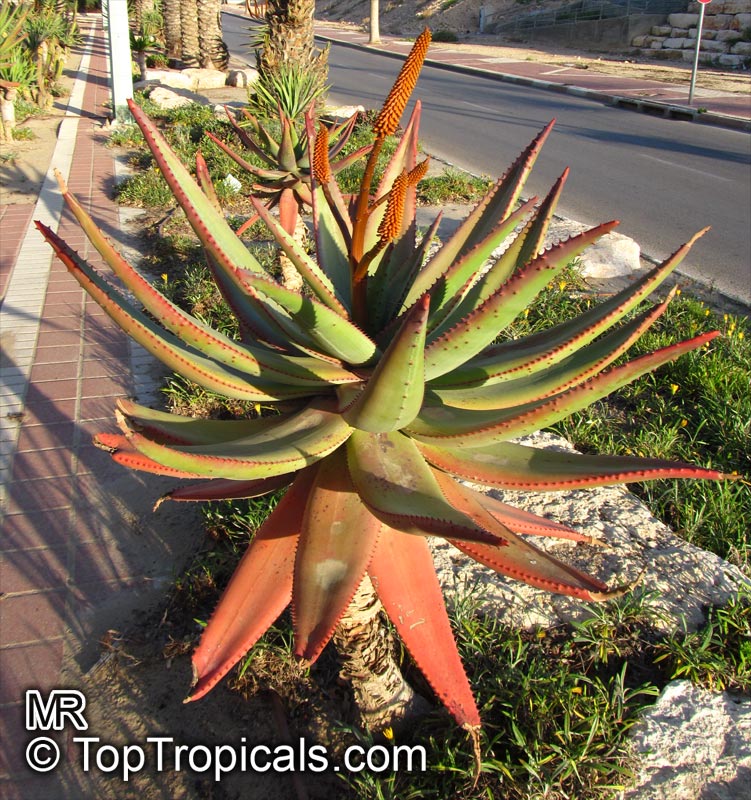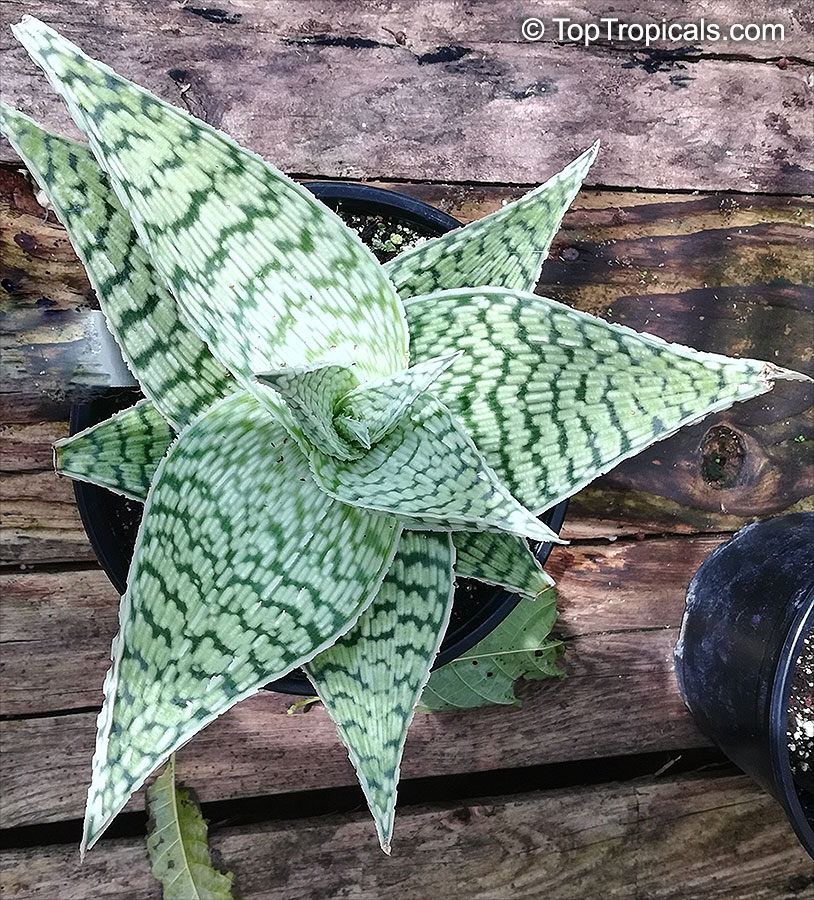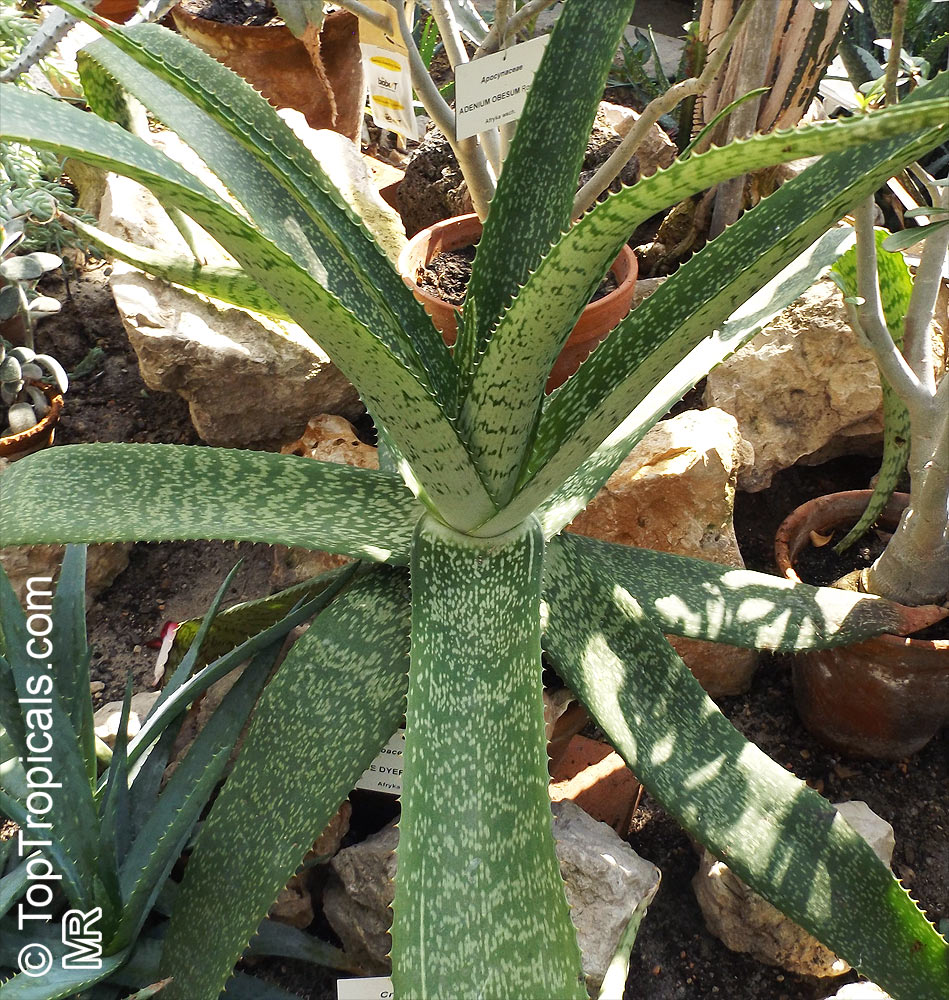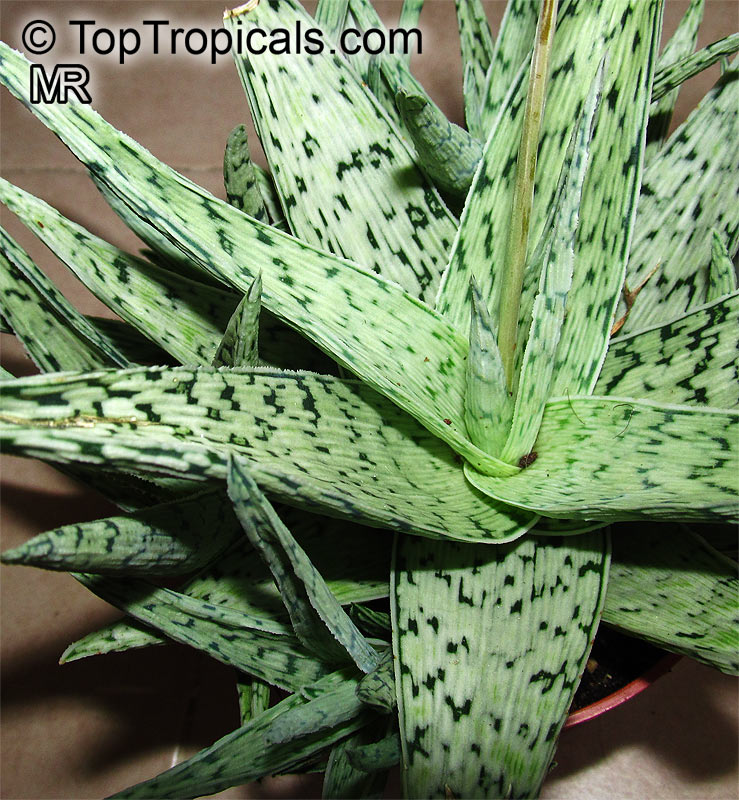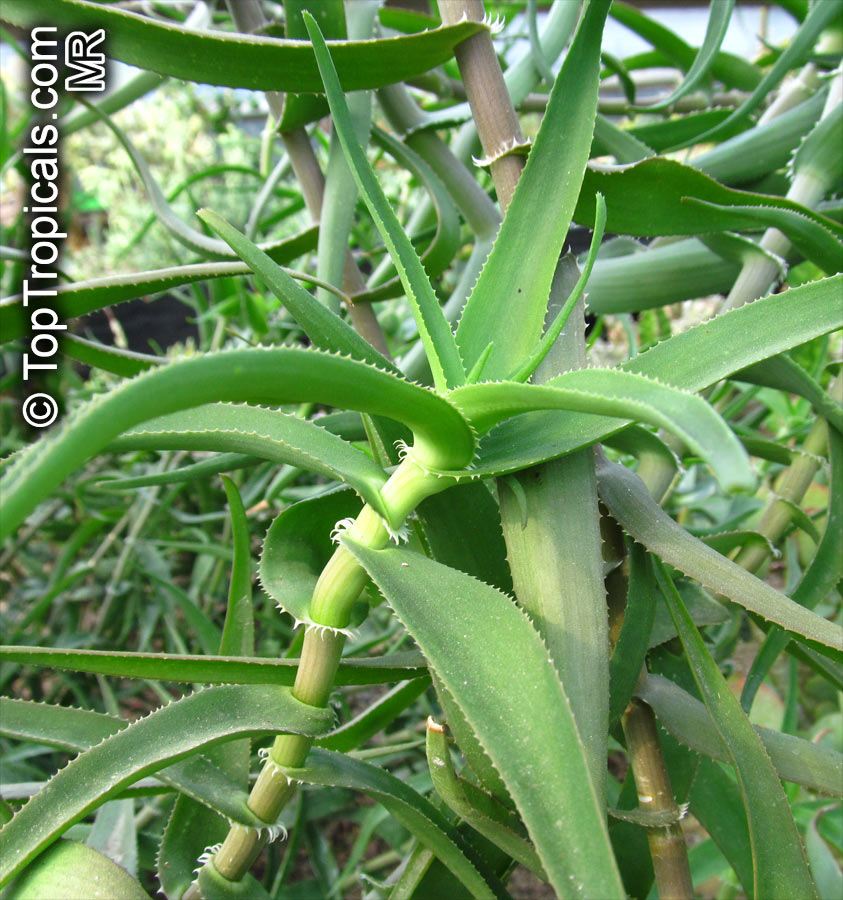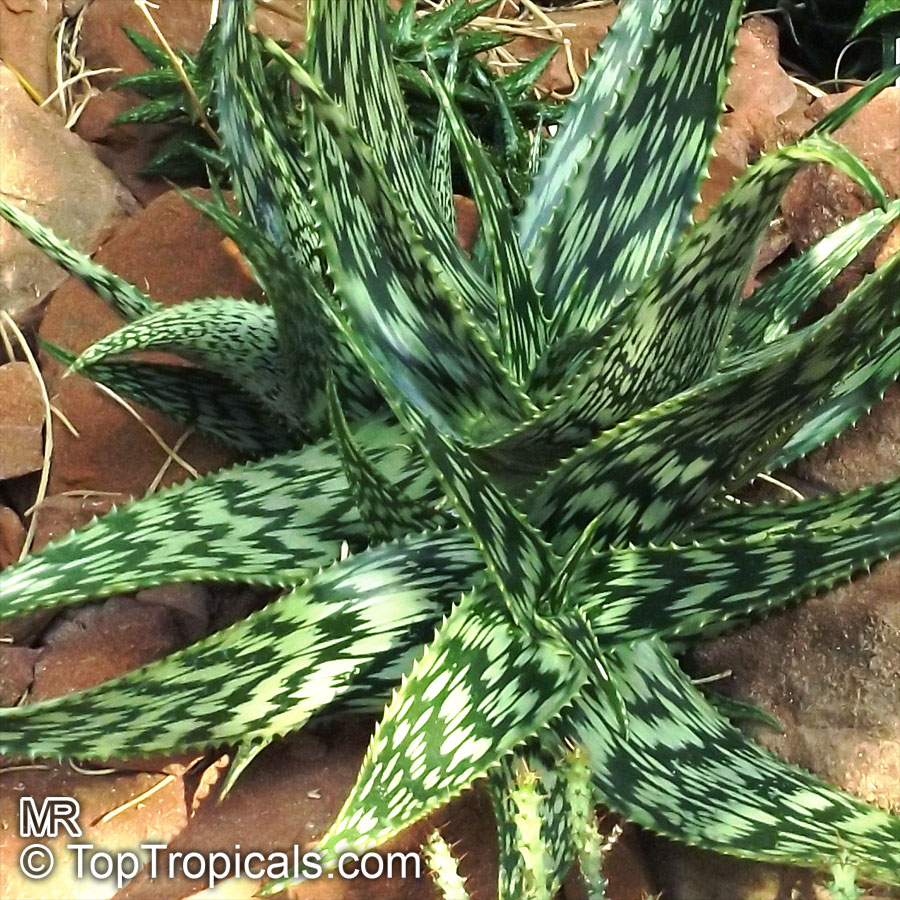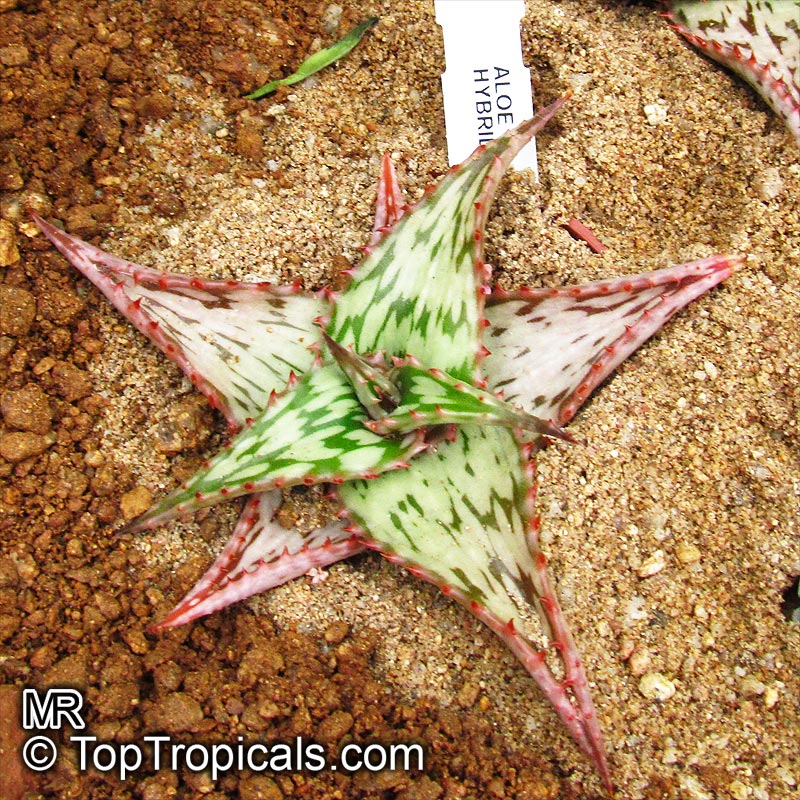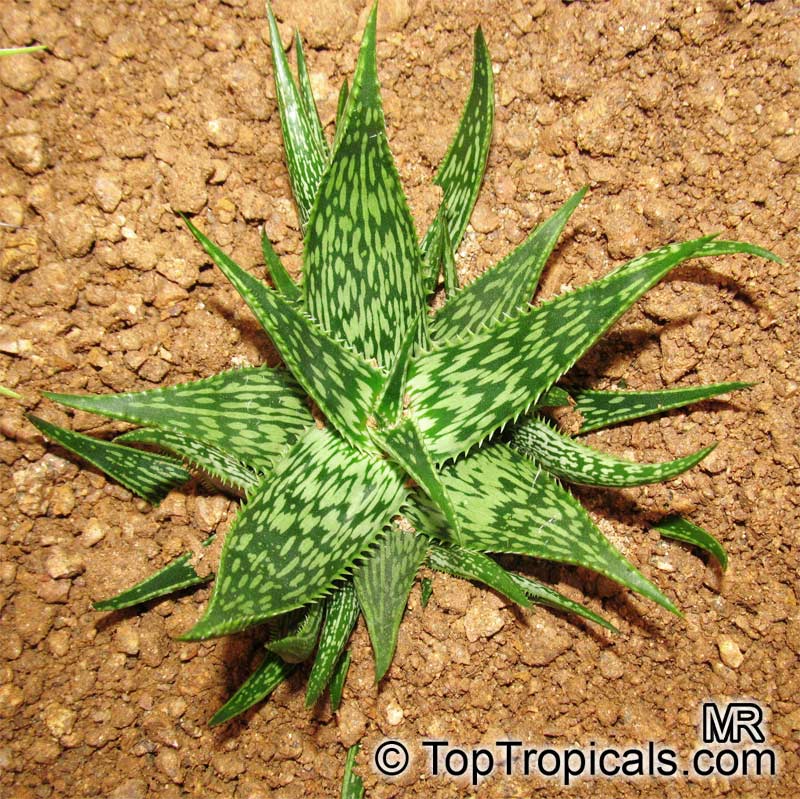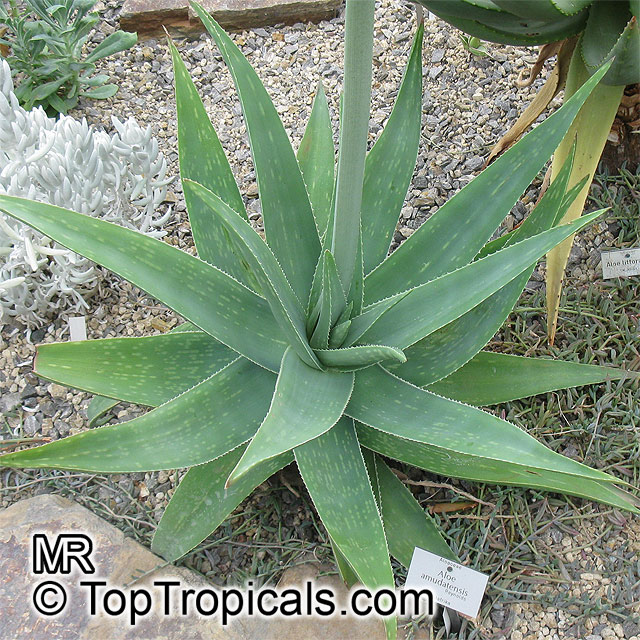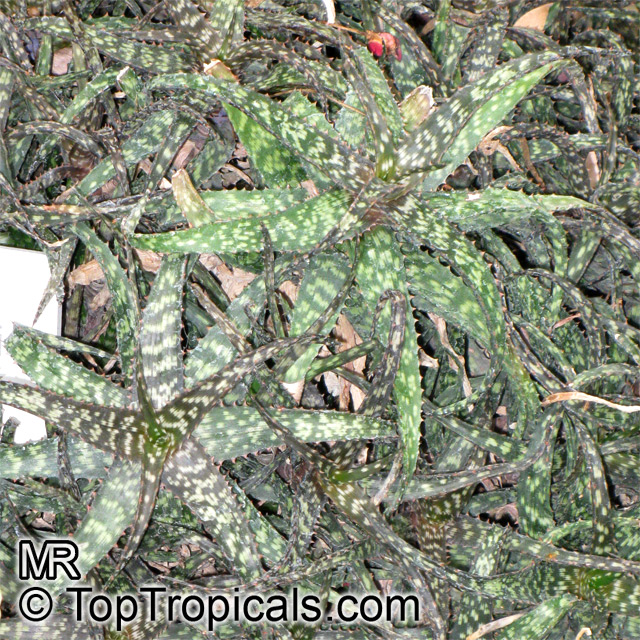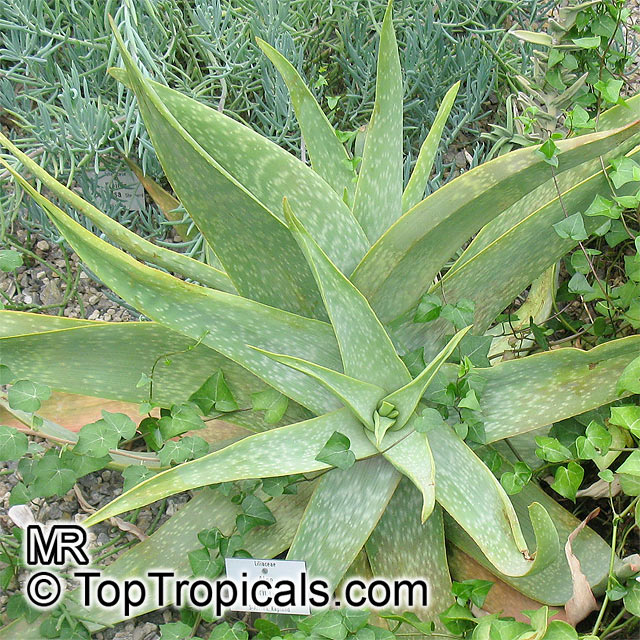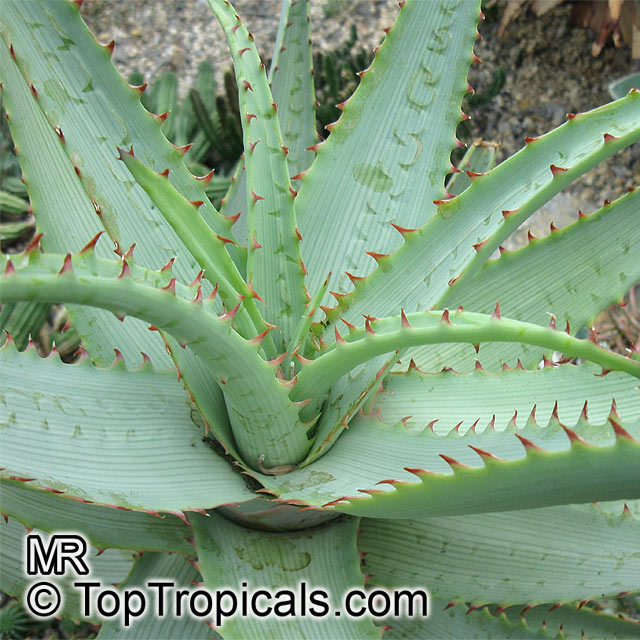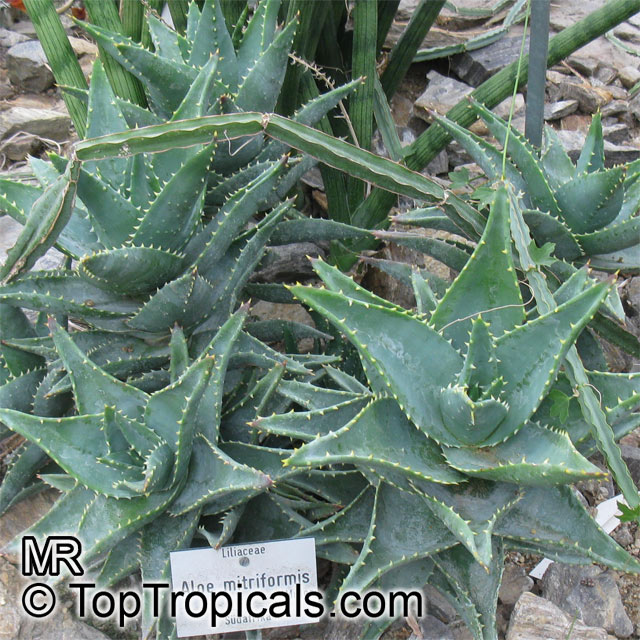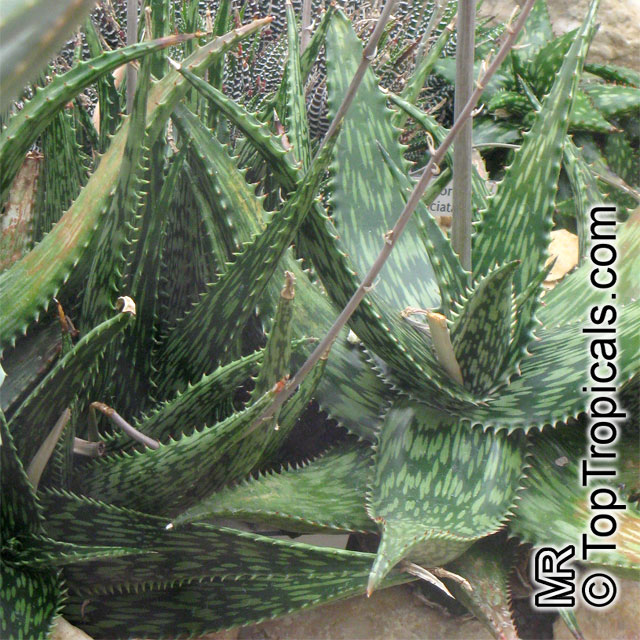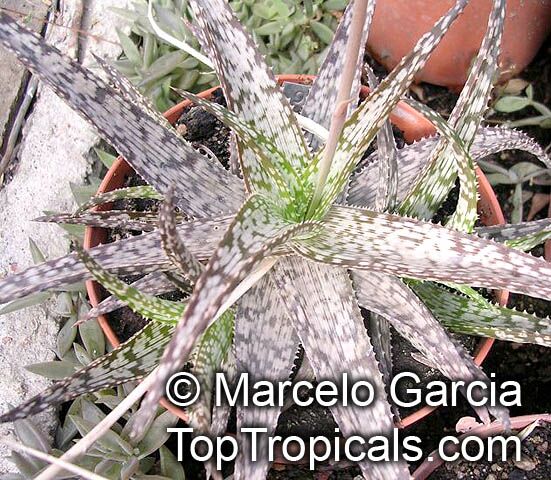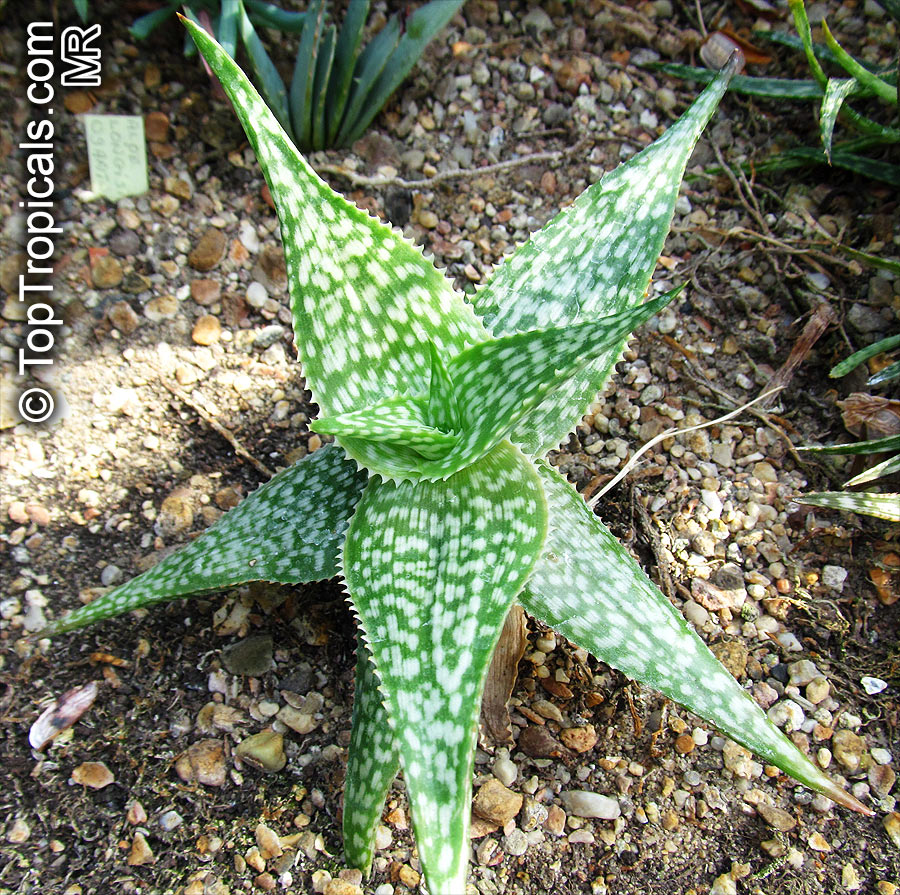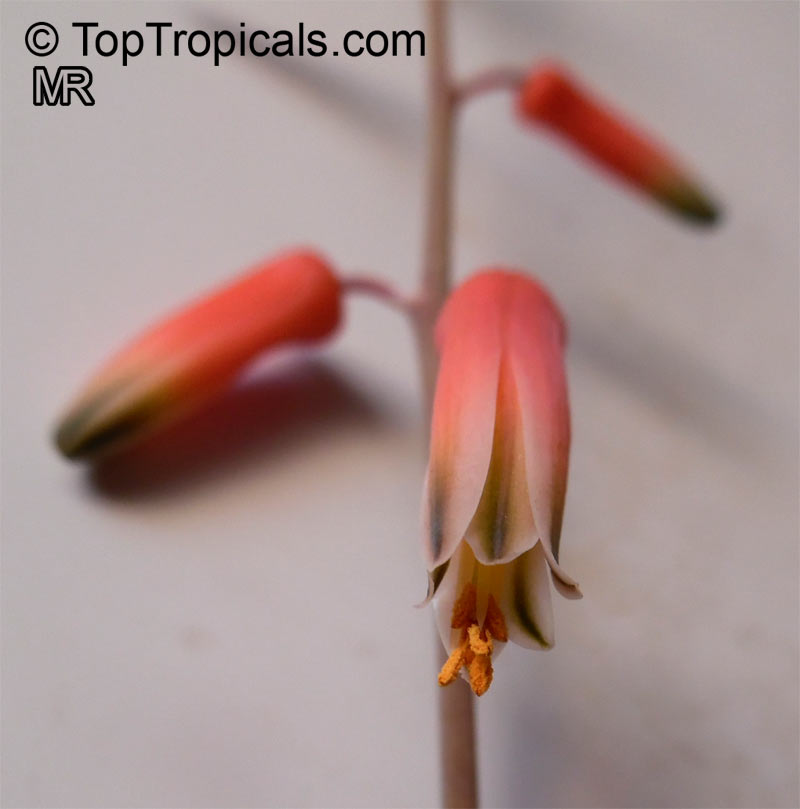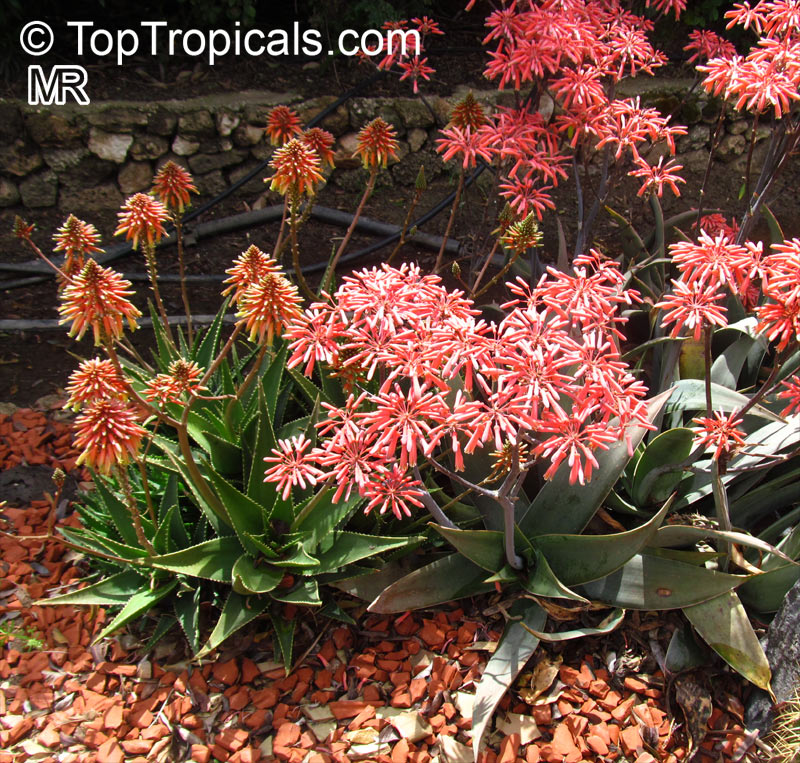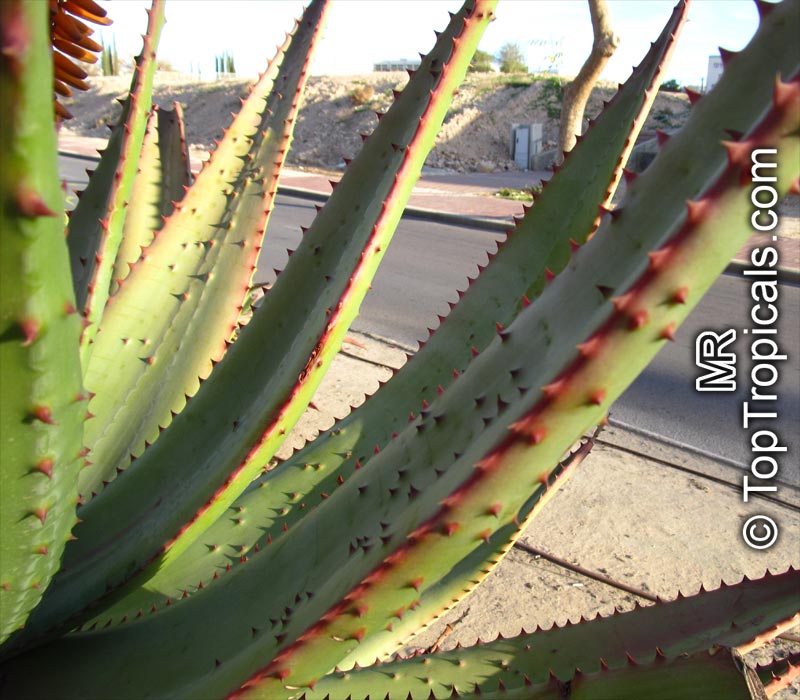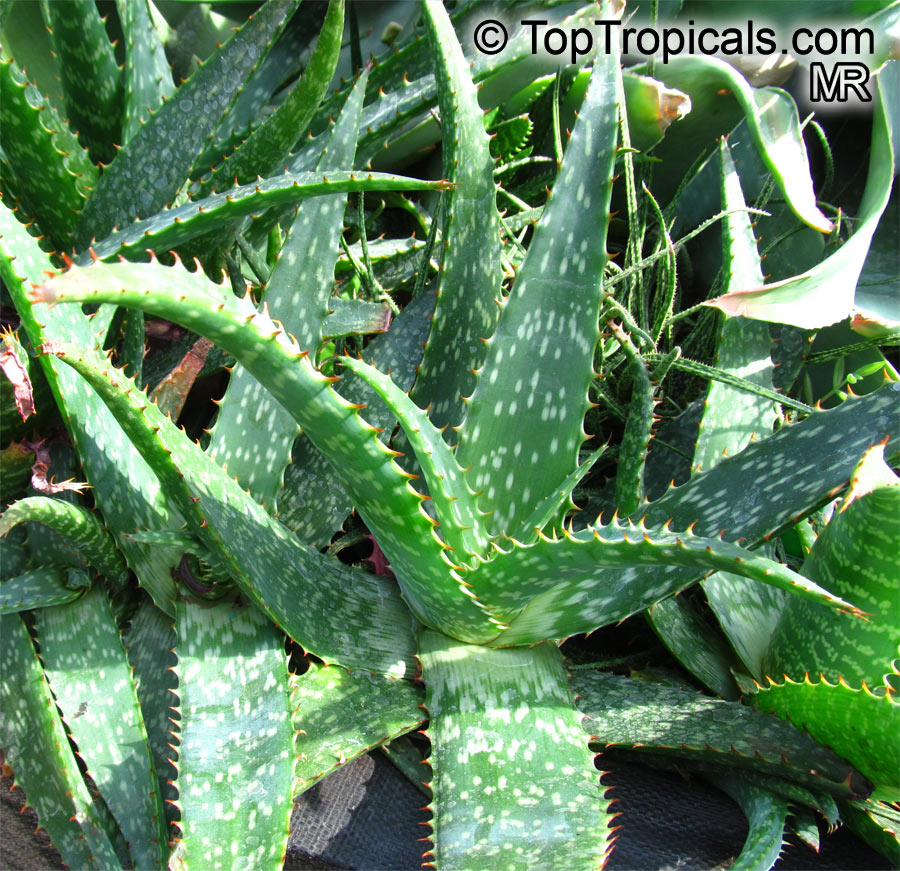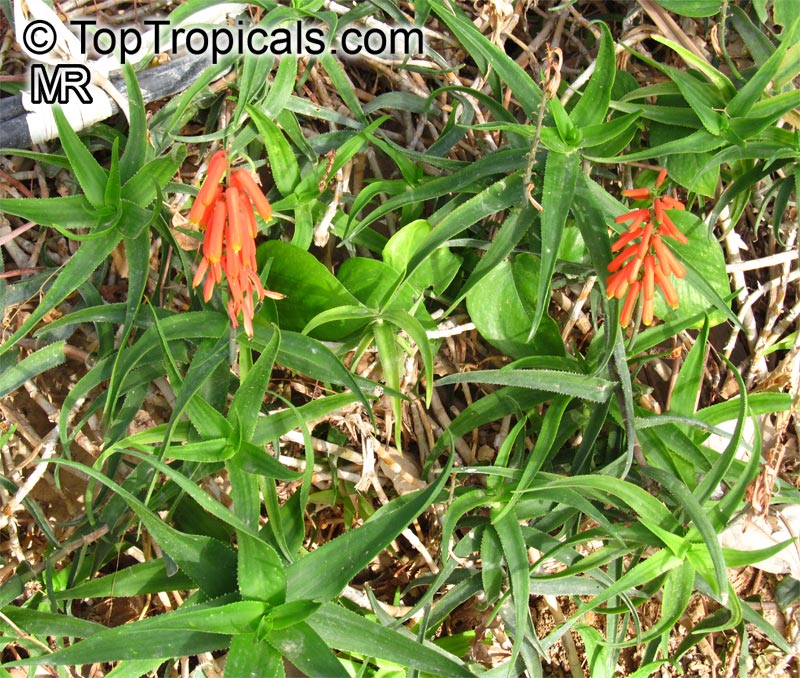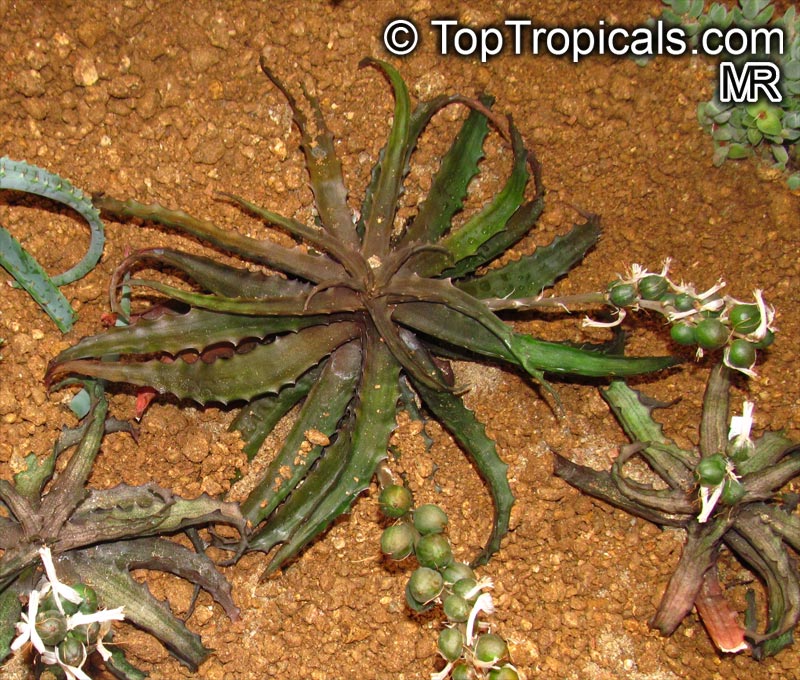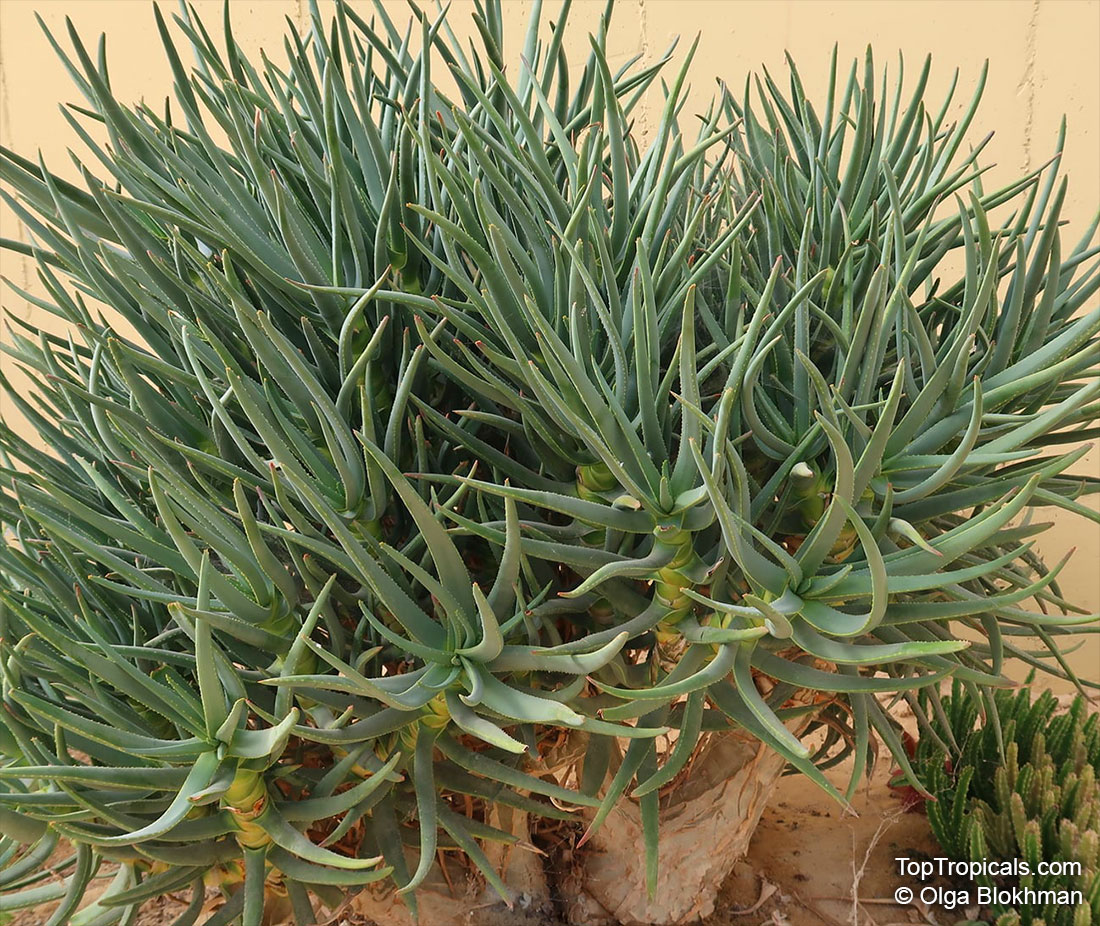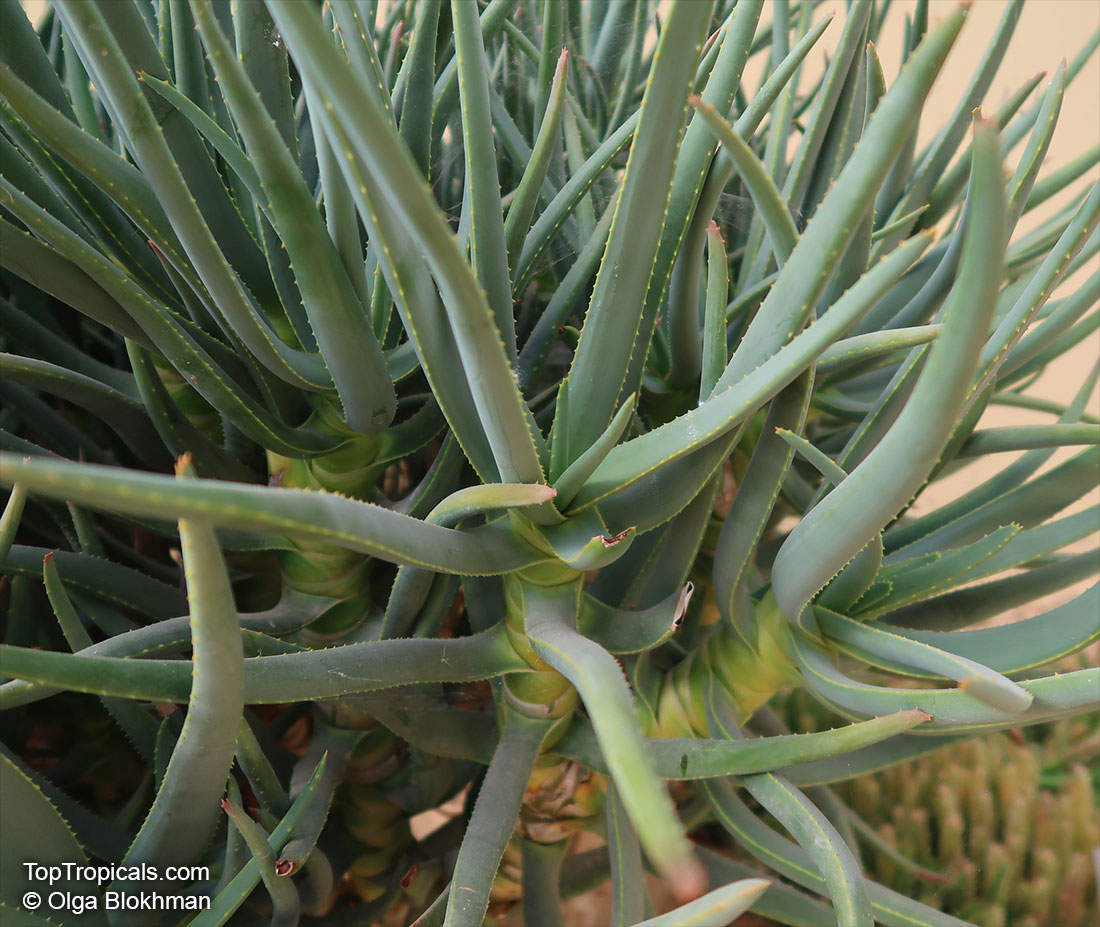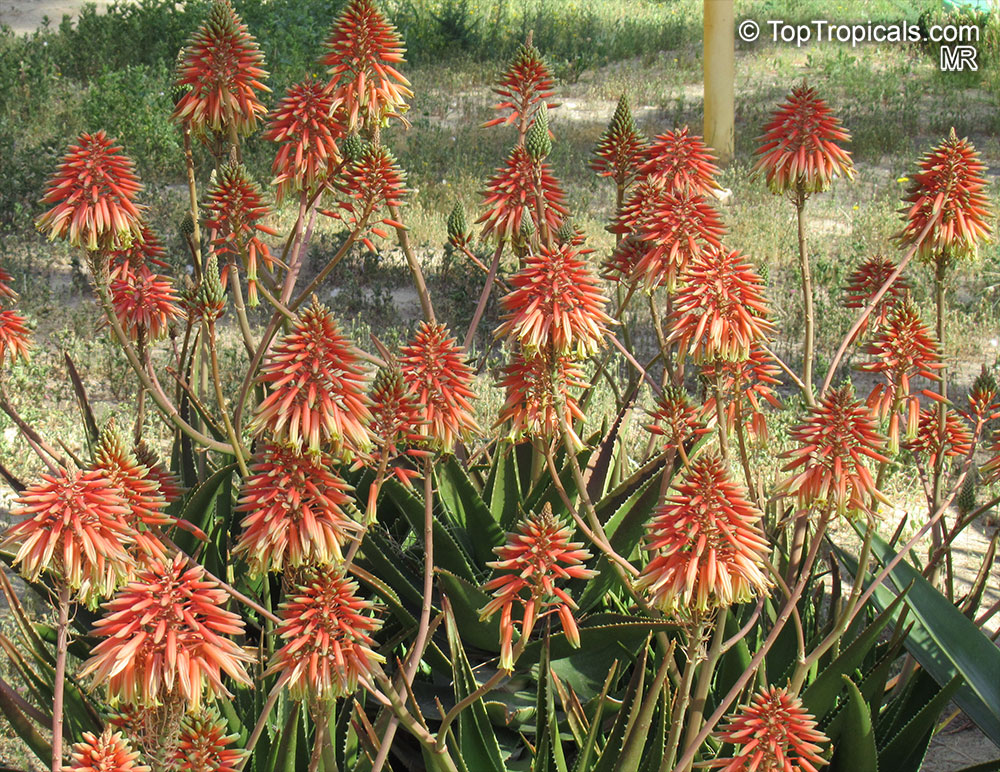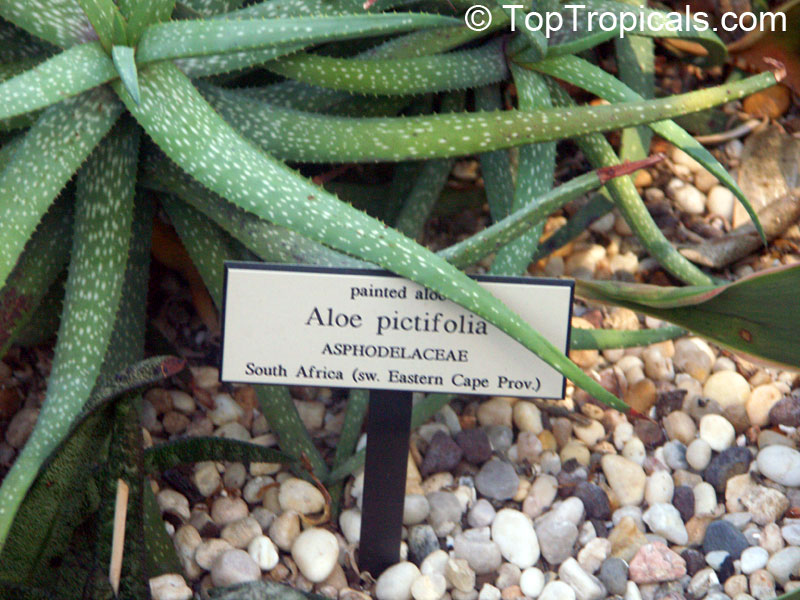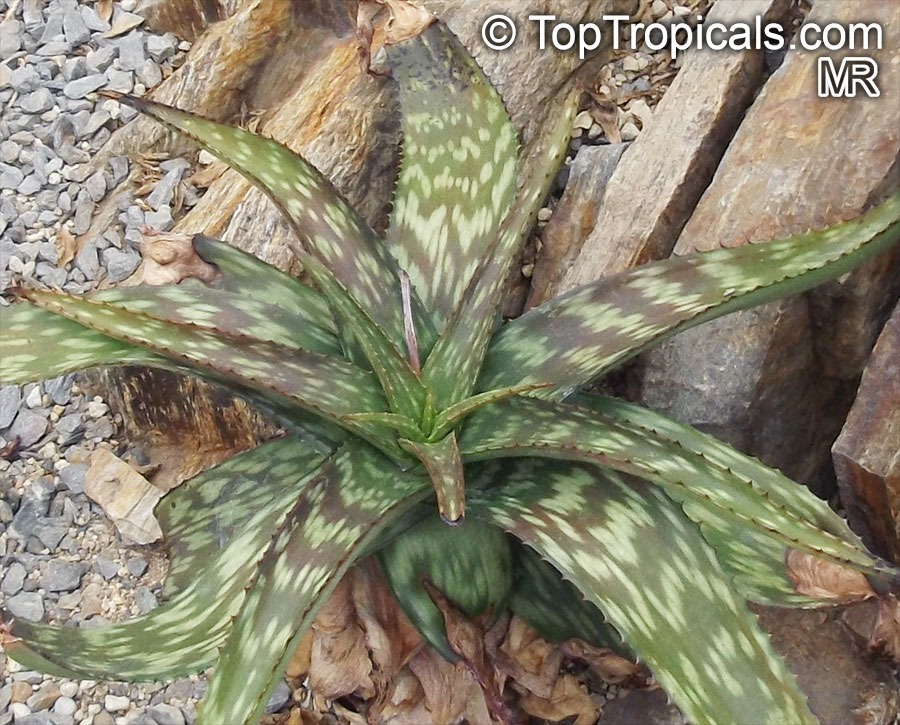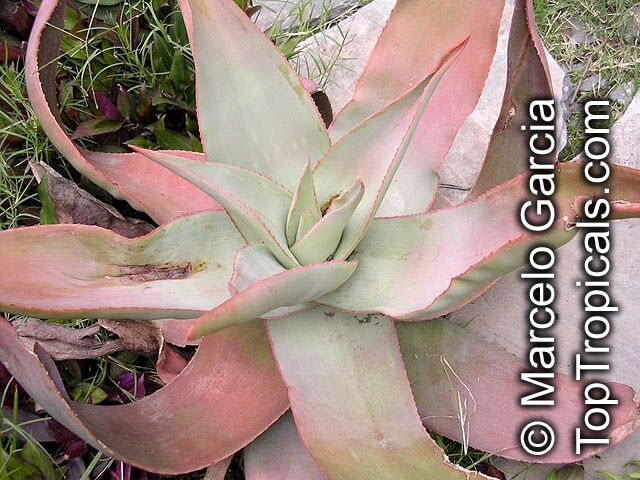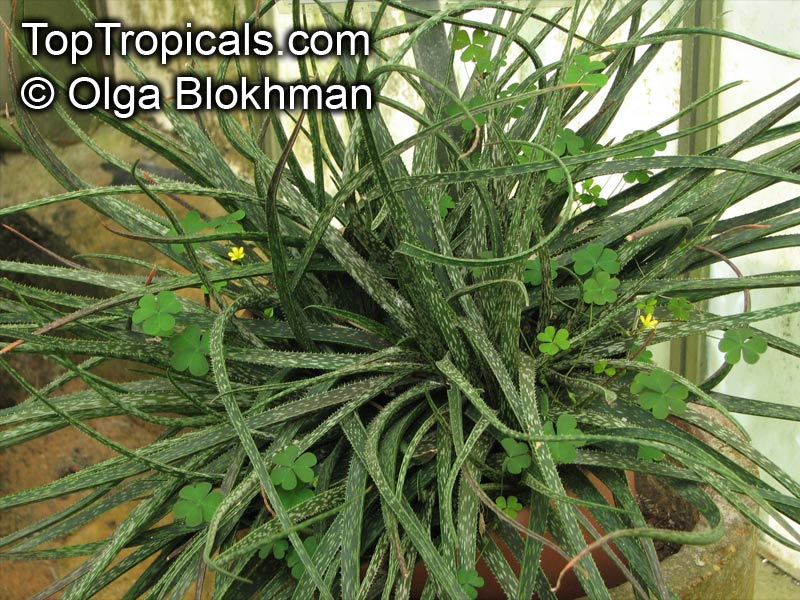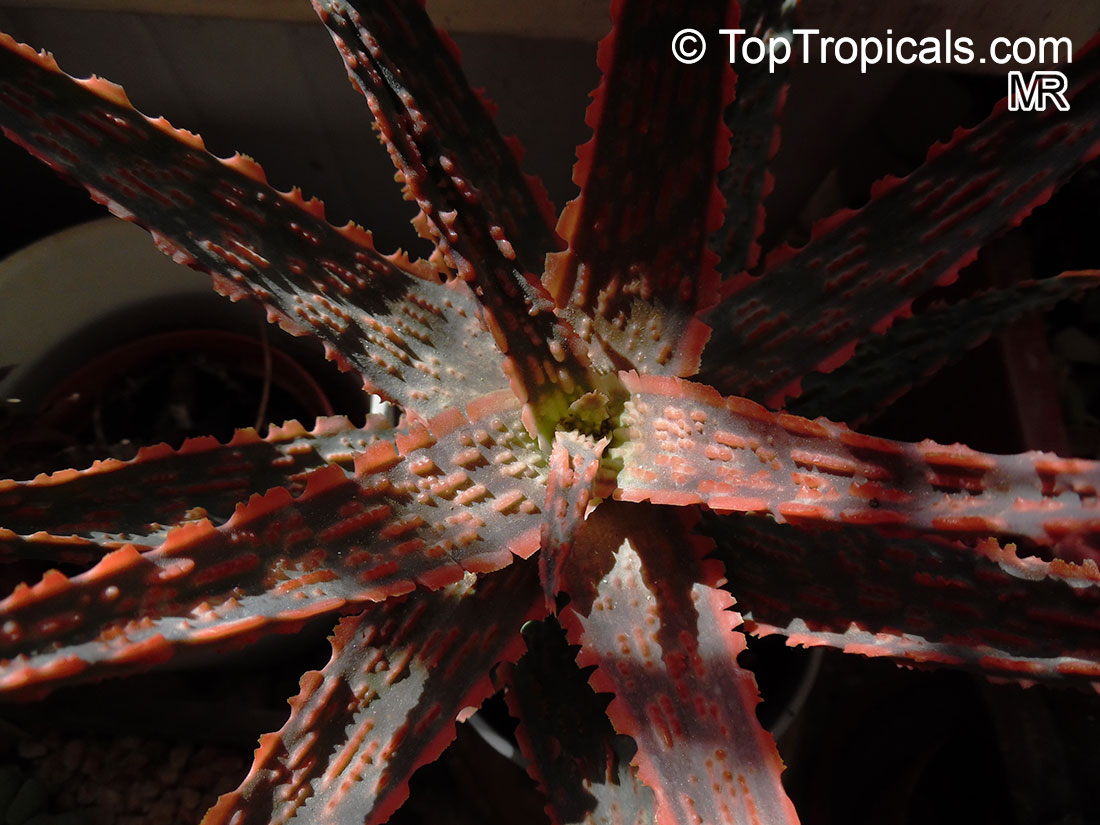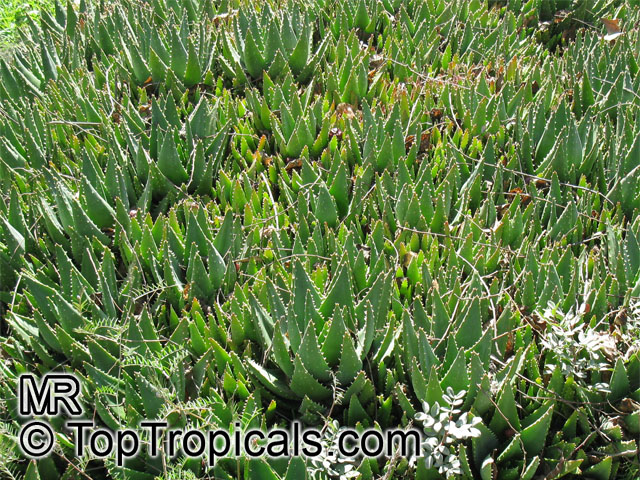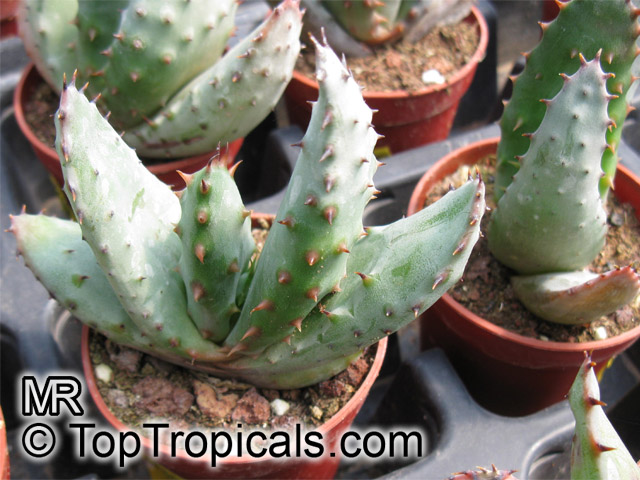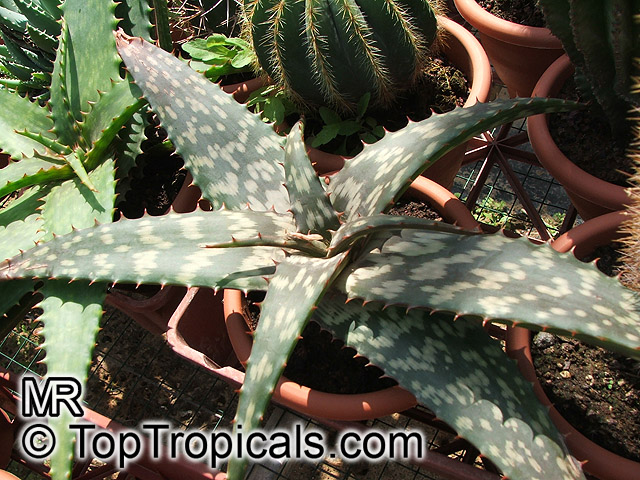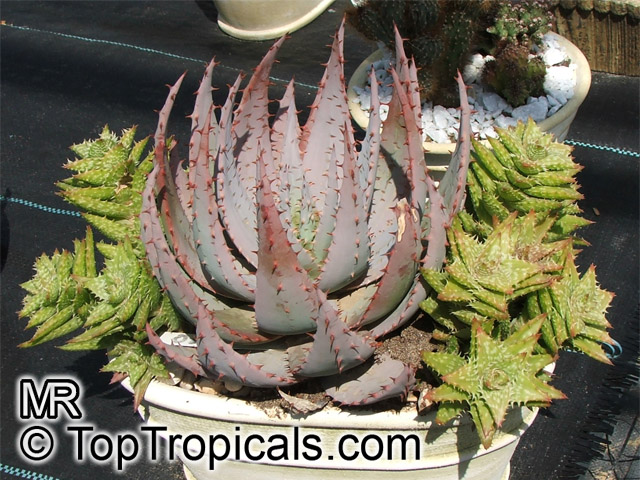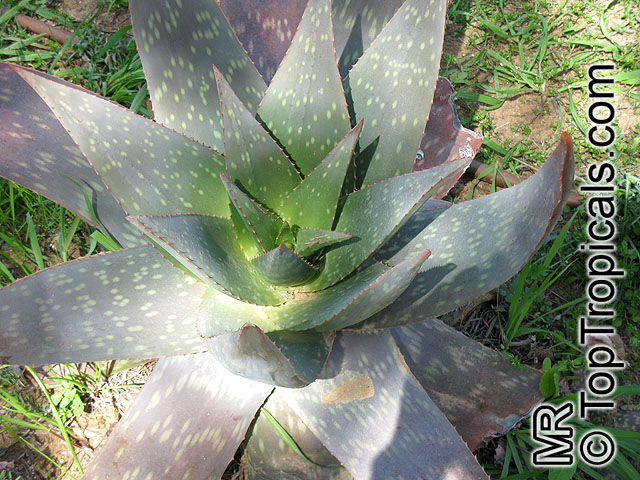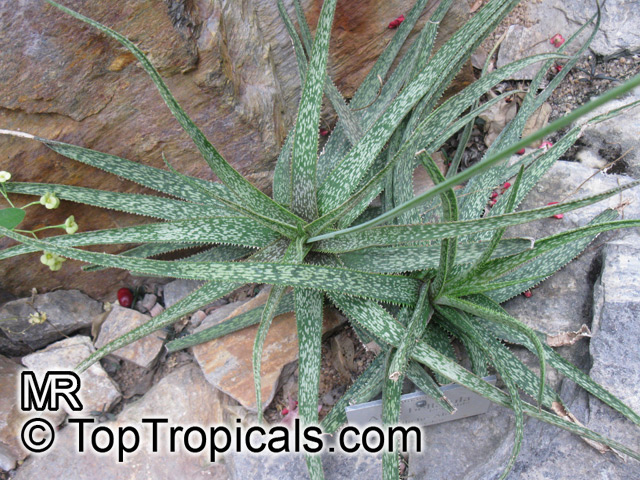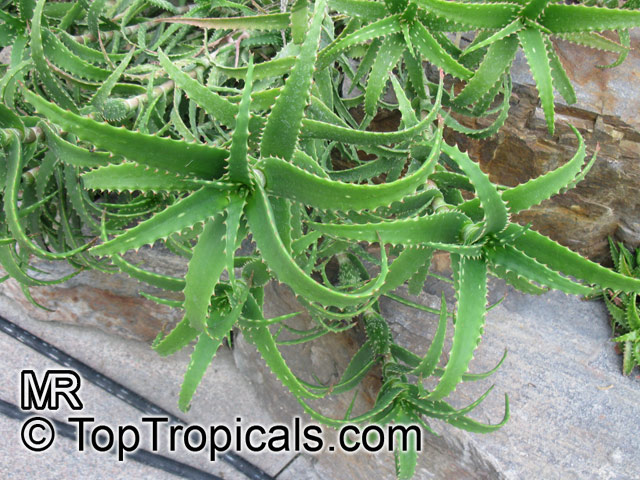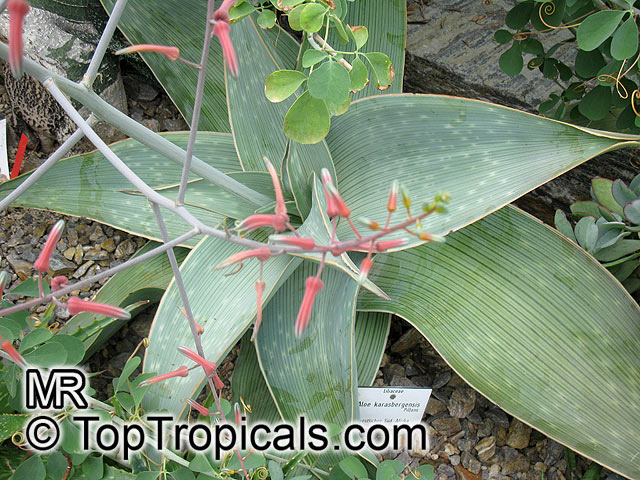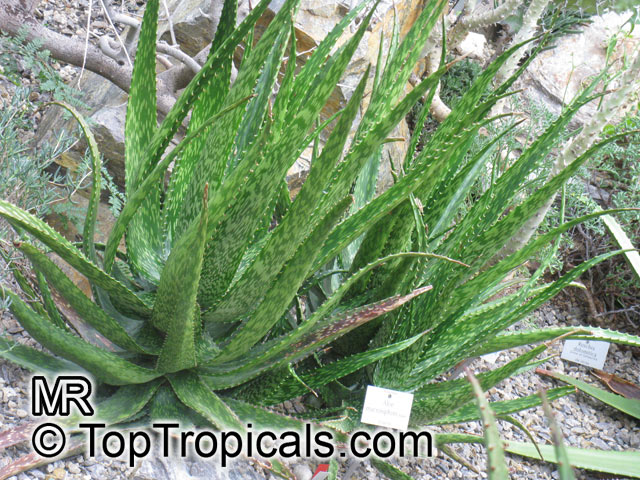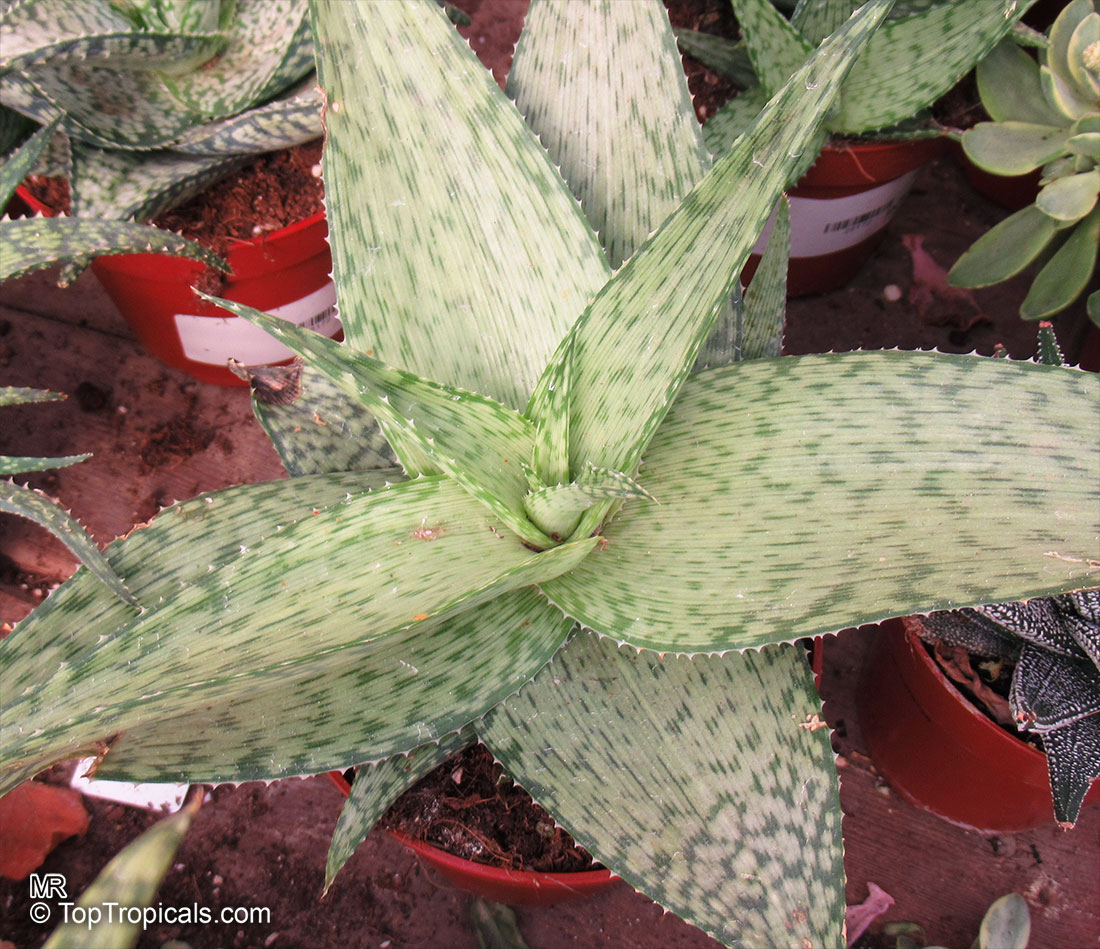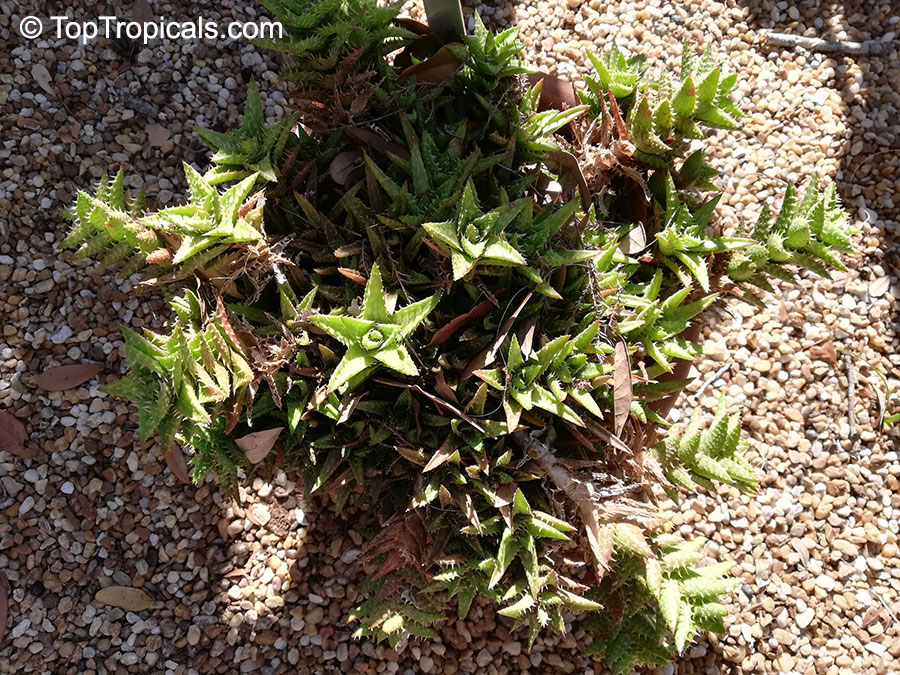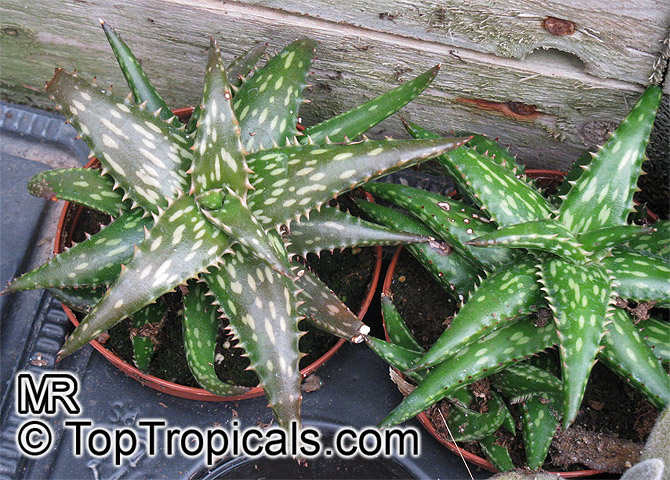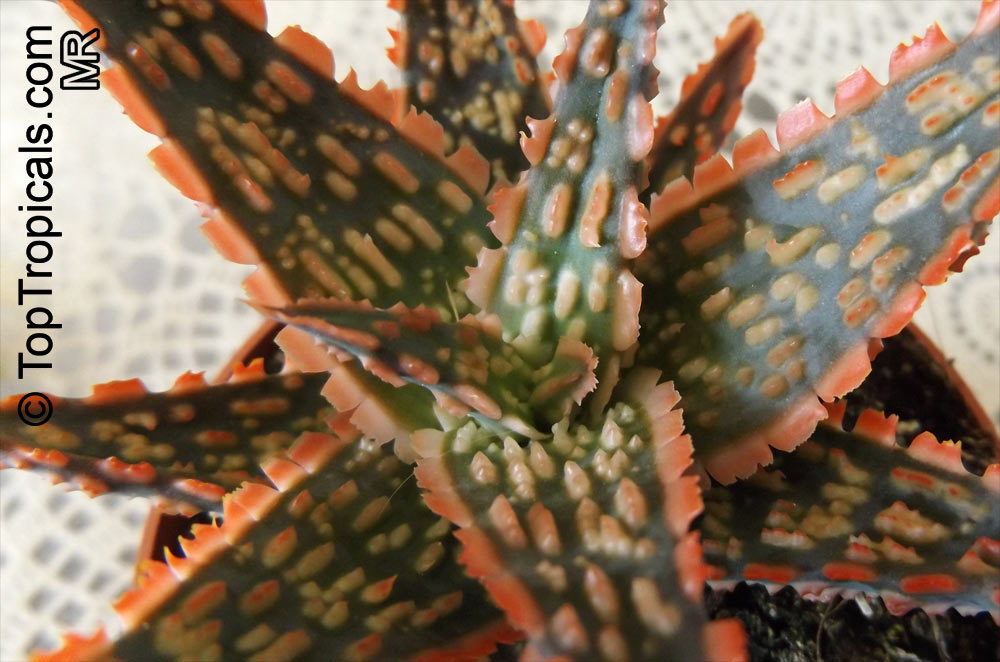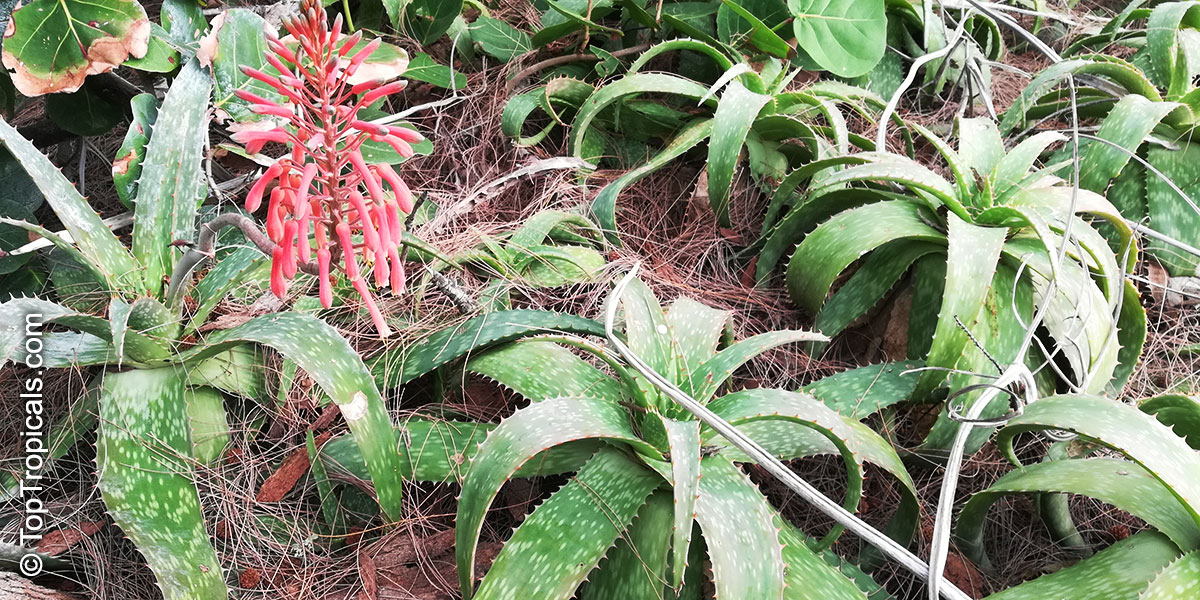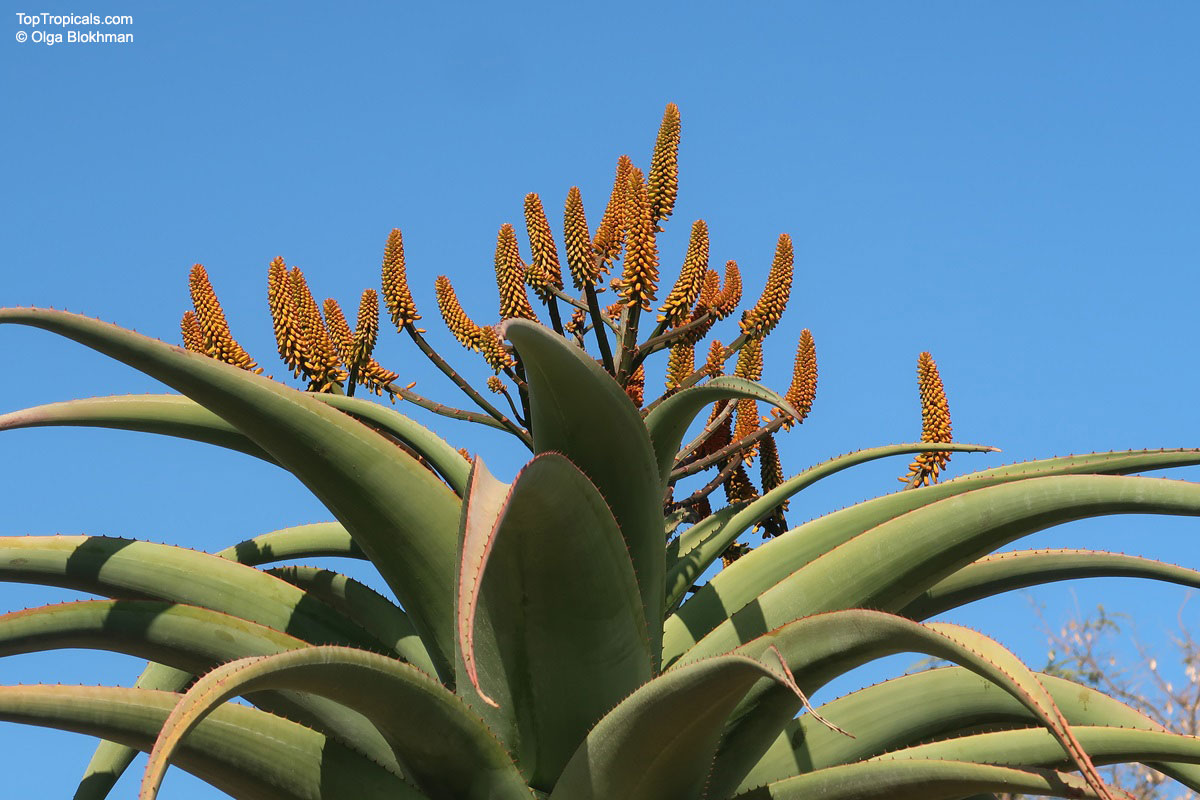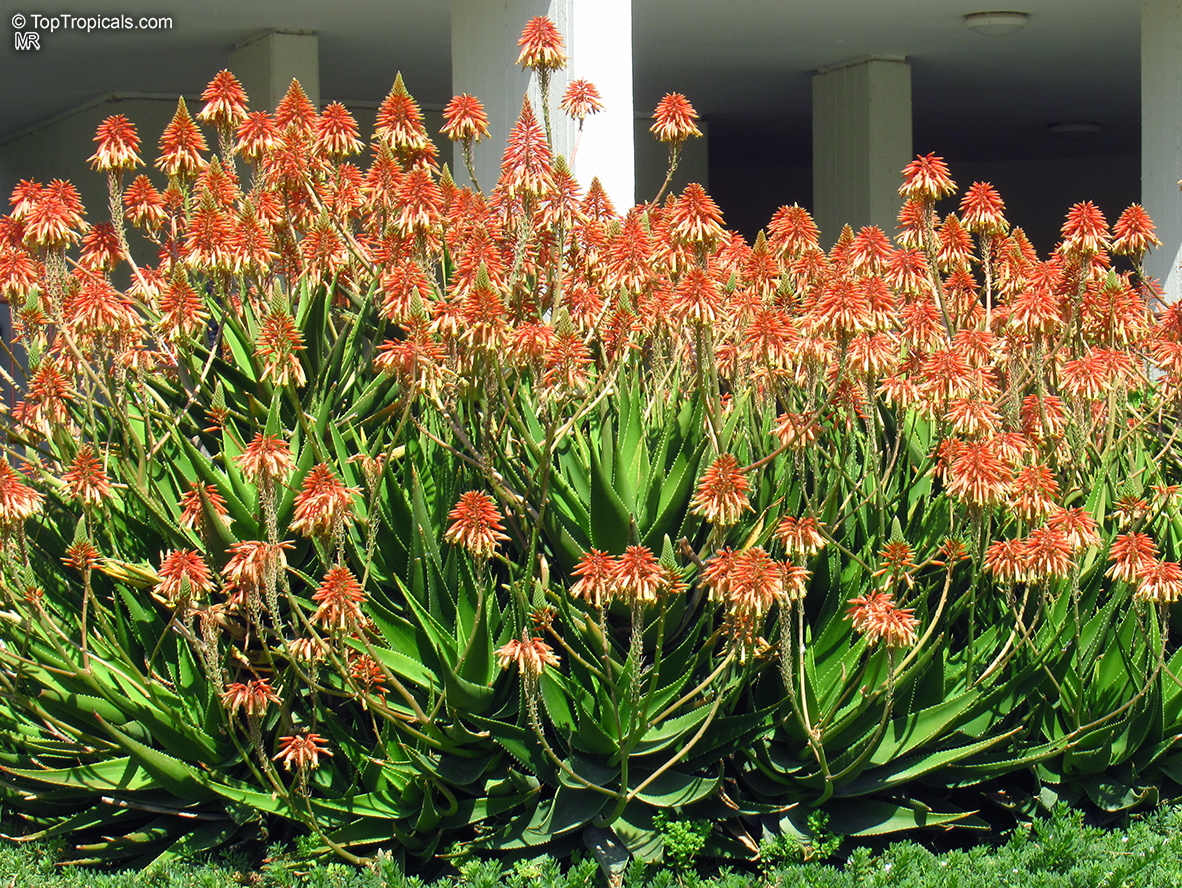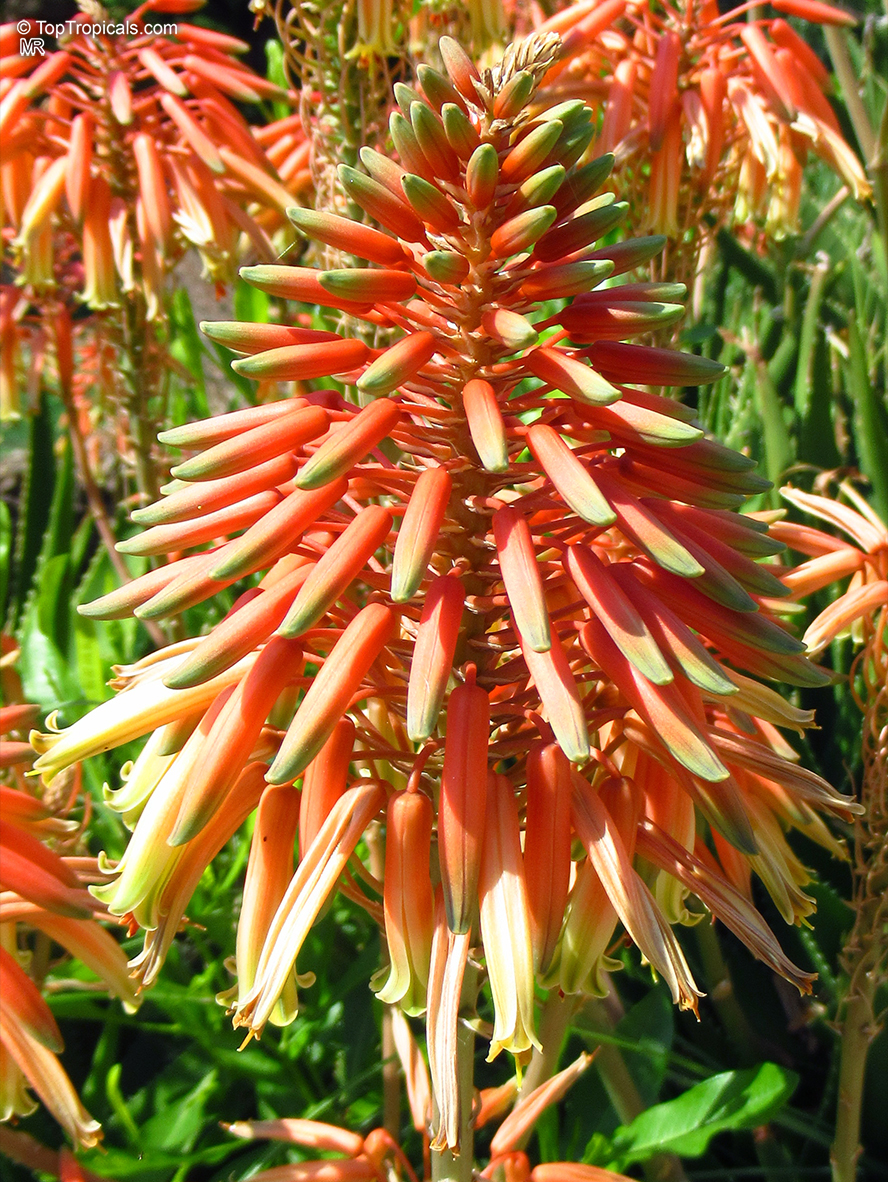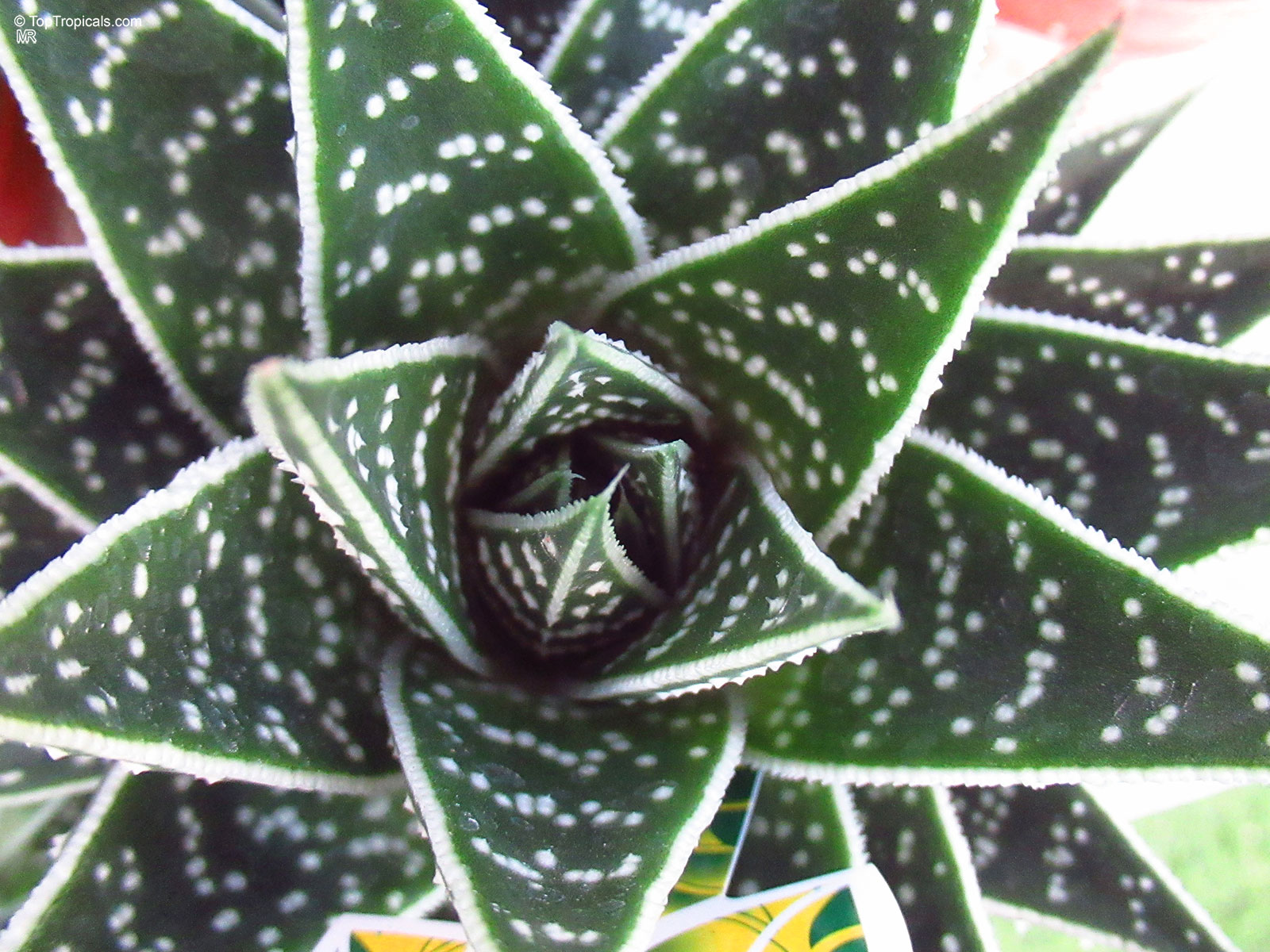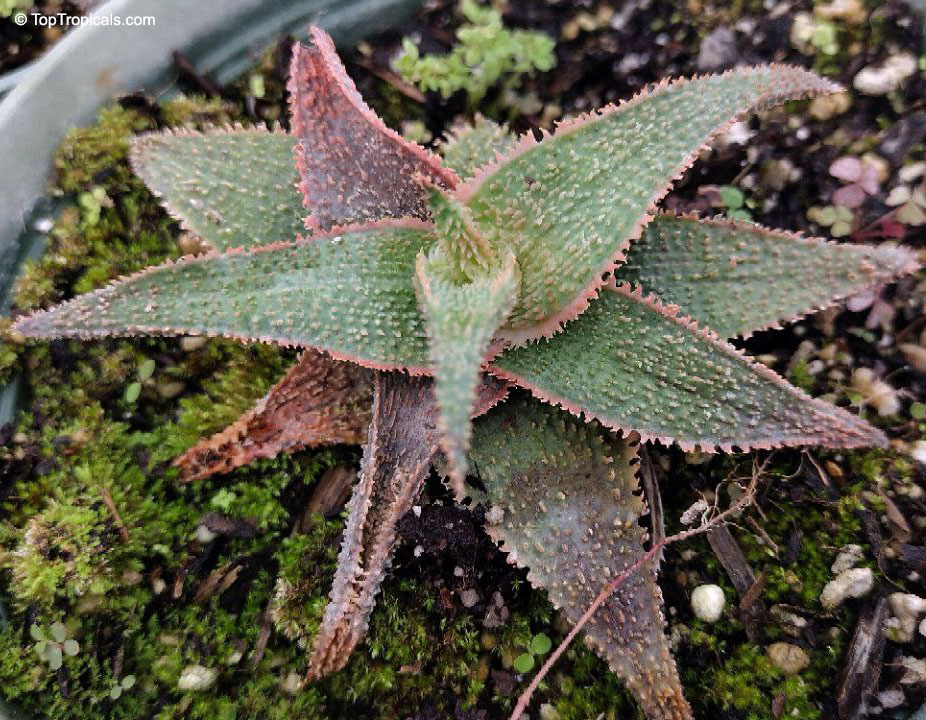Aloe sp. (Aloe)
Top Tropicals Plant Encyclopedia
Botanical name: Aloe sp.
Common name: Aloe
Family: Asphodelaceae (Formerly:Xanthorrhoeaceae)
Subfamily: Asphodeloideae
Origin: Africa, Madagascar and The Arabian Peninsula
Hardiness: 30°F














They range in size from little one inch miniatures to massive plant colonies consisting of hundreds of 2 foot diameter plants. Although most Aloes have some medicinal or commercial value, the most commonly known is the Aloe barbadensis... better known as Aloe vera. All Aloes are semitropical succulent plants, and may only be grown outdoors in areas where there is no chance of freezing (USDA zones 10-11). However, they make excellent house plants when they are given sufficient light. Potted Aloes benefit from spending the summer outdoors. Older specimens may even bloom, producing a tall stock covered with bright colored coral flowers. Aloe flower nectar is a favorite of hummingbirds! The medicinal properties of Aloe vera have been known, and recorded since biblical times. It has been used for a variety of ailments, and as an ointment for burns, cuts, and rashes, as well as an ingredient in various beauty preparations. The sap of the Aloe is a thick, mucilaginous gel. It is this gel which is used medicinally. Because Aloe plants consist of 95% water, they are extremely frost tender. If they are grown outdoors in warm climates, they should be planted in full sun, or light shade. The soil should be moderately fertile, and fast draining. Established plants will survive a drought quite well, but for the benefit of the plant, water should be provided. During the winter months, the plant will become somewhat dormant, and utilize very little moisture. During this period watering should be minimal. Allow the soil to become completely dry before giving the plant a cup or two of water. During the summer months, the soil should be completely soaked, but then be allowed to dry again before re-watering. Aloes have a shallow, spreading root system, so when it is time to repot choose a wide planter, rather than a deep one. You may also use a packaged 'cacti mix' soil. Aloes are propagated by removing the offsets which are produced around the base of mature plants, when they are a couple inches tall (or larger). They may also be grown from seed.
Similar plants: Aloe sp. (Aloe)
- Aloe africana (African Aloe)
- Aloe arborescens (Tree Aloe)
- Aloe aristata (Torch Plant)
- Aloe erinacea (Goree)
- Aloe haworthioides (Haworthia-leaved Aloe)
- Aloe humilis (Spider Aoe)
- Aloe juvenna (Tiger Tooth Aloe)
- Aloe marlothii (Mountain Aloe)
- Aloe plicatilis (Fan Aloe)
- Aloe speciosa (Tilt-head Aloe)
